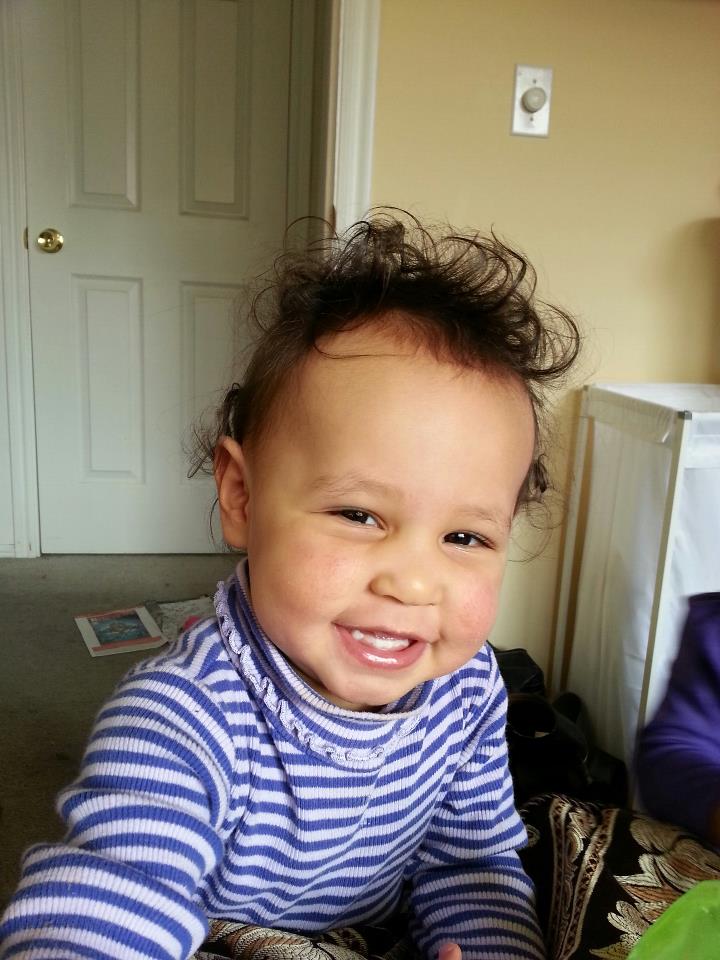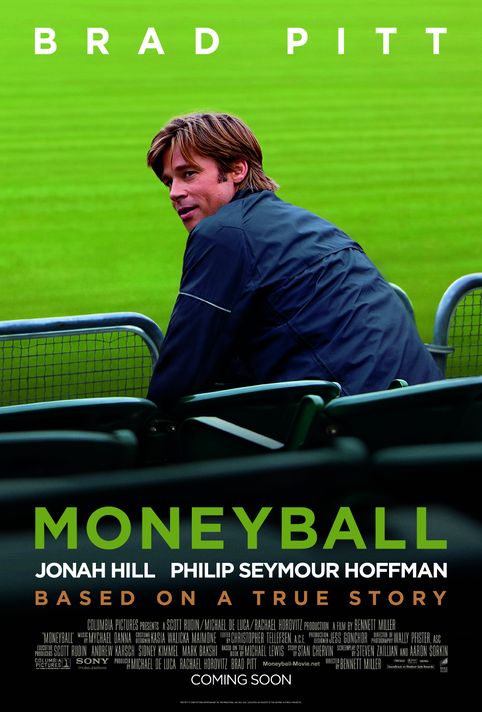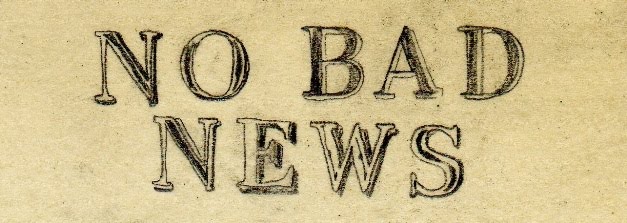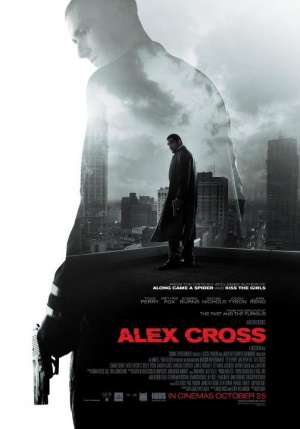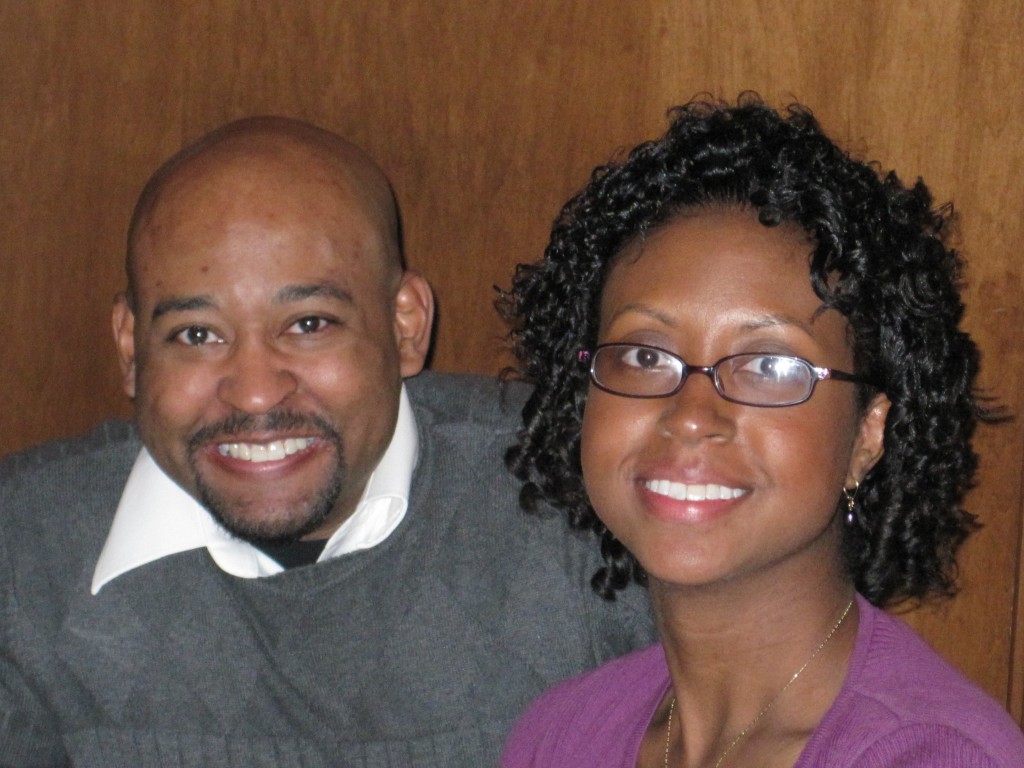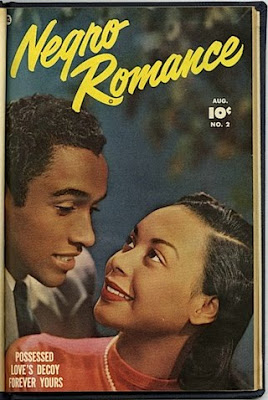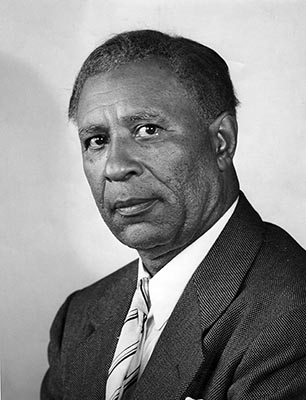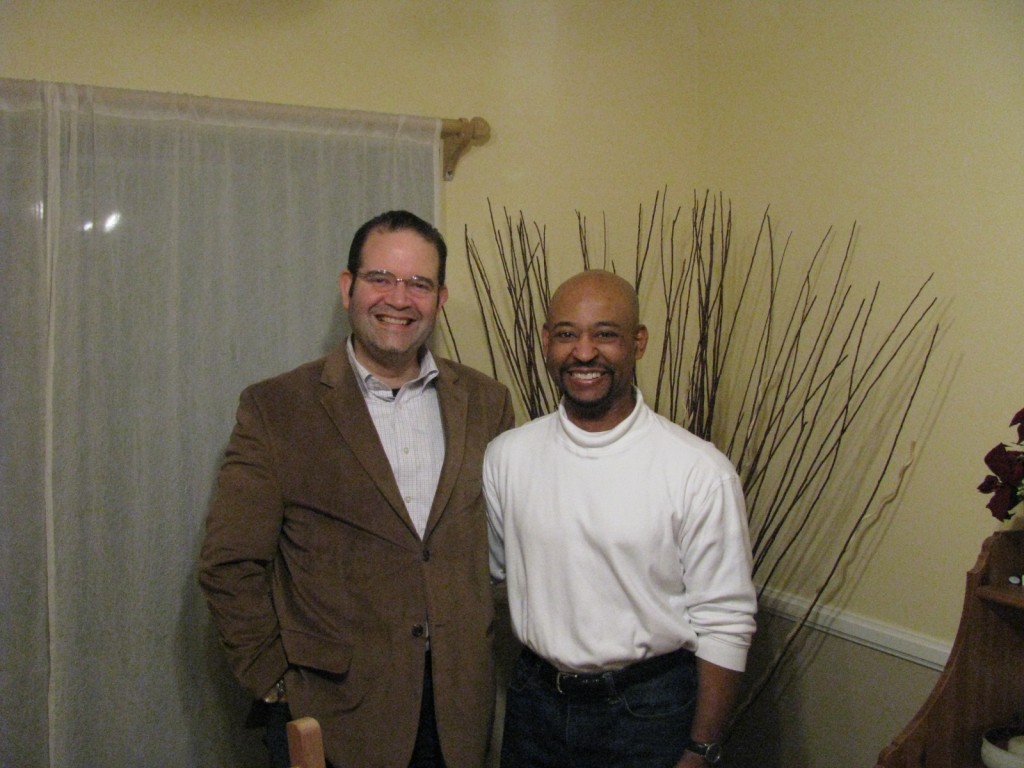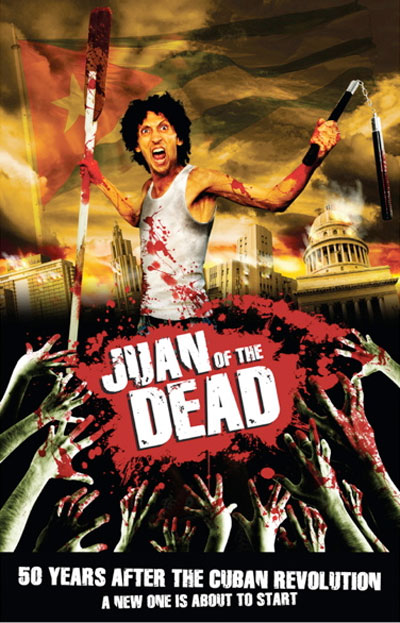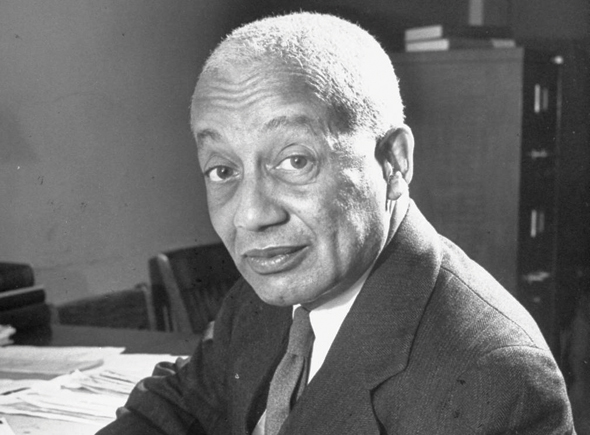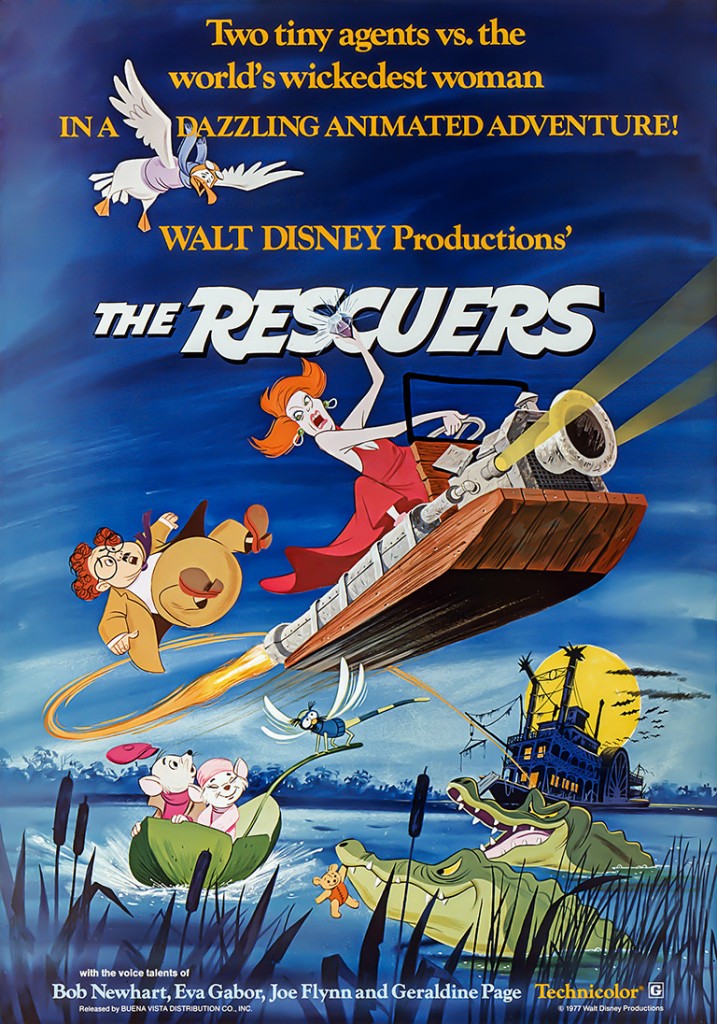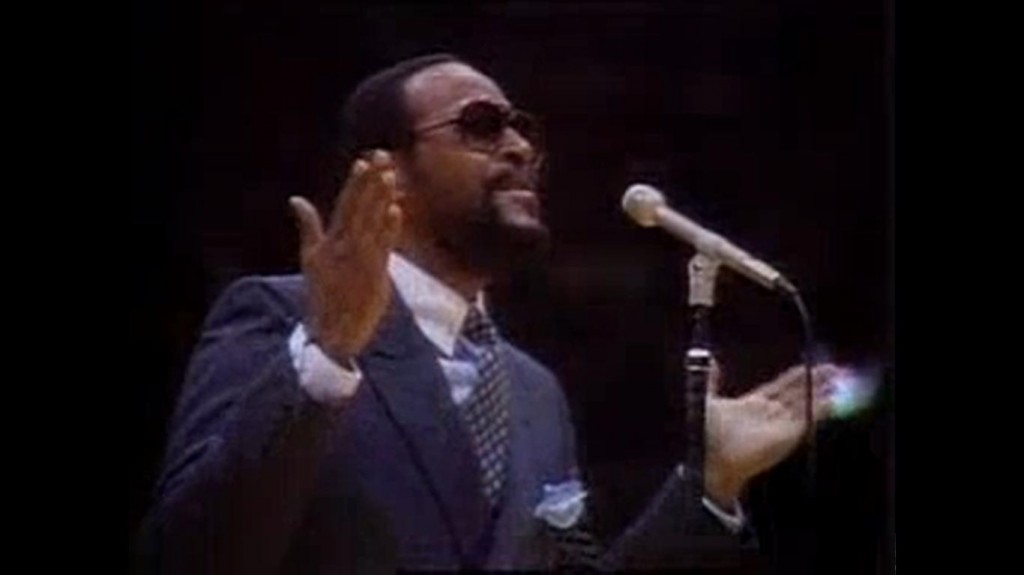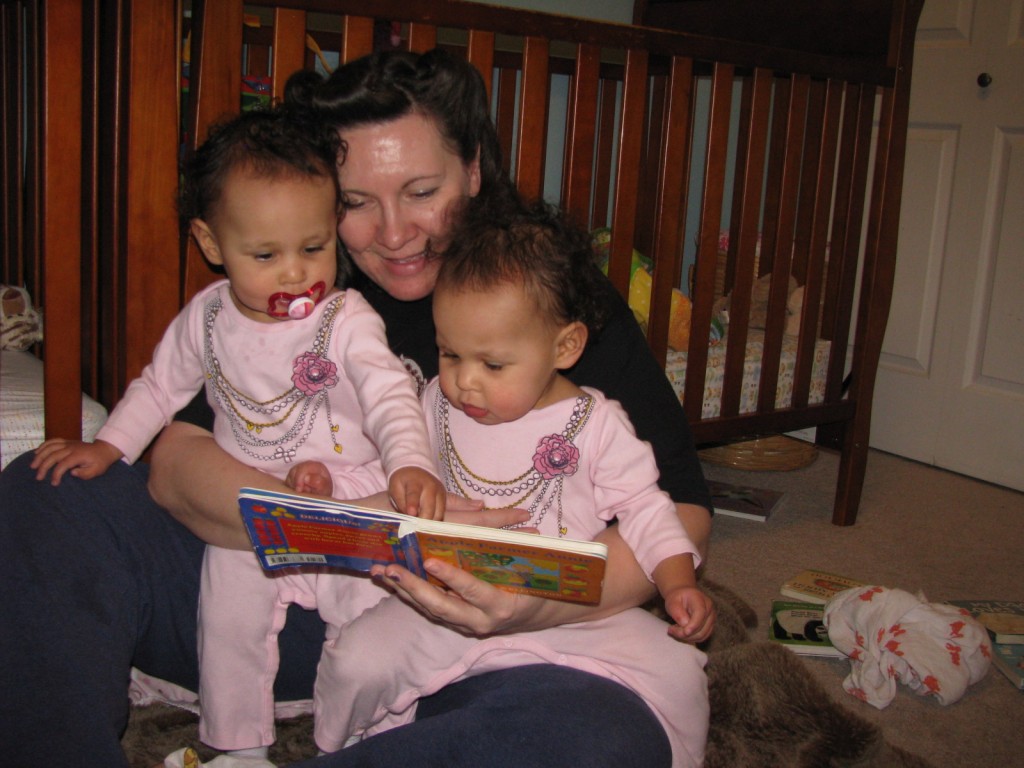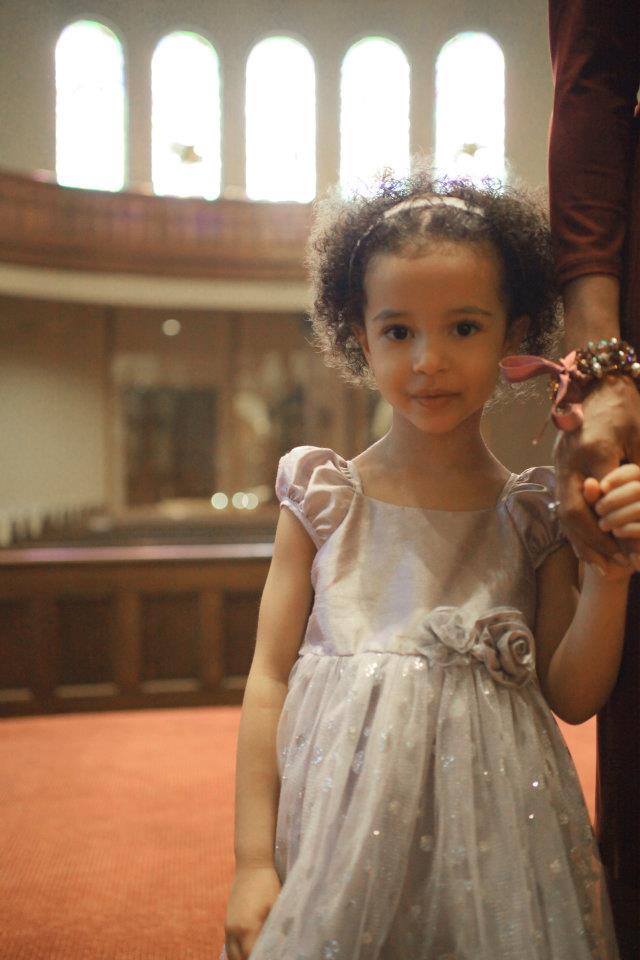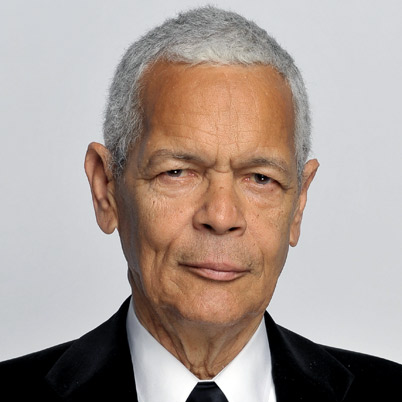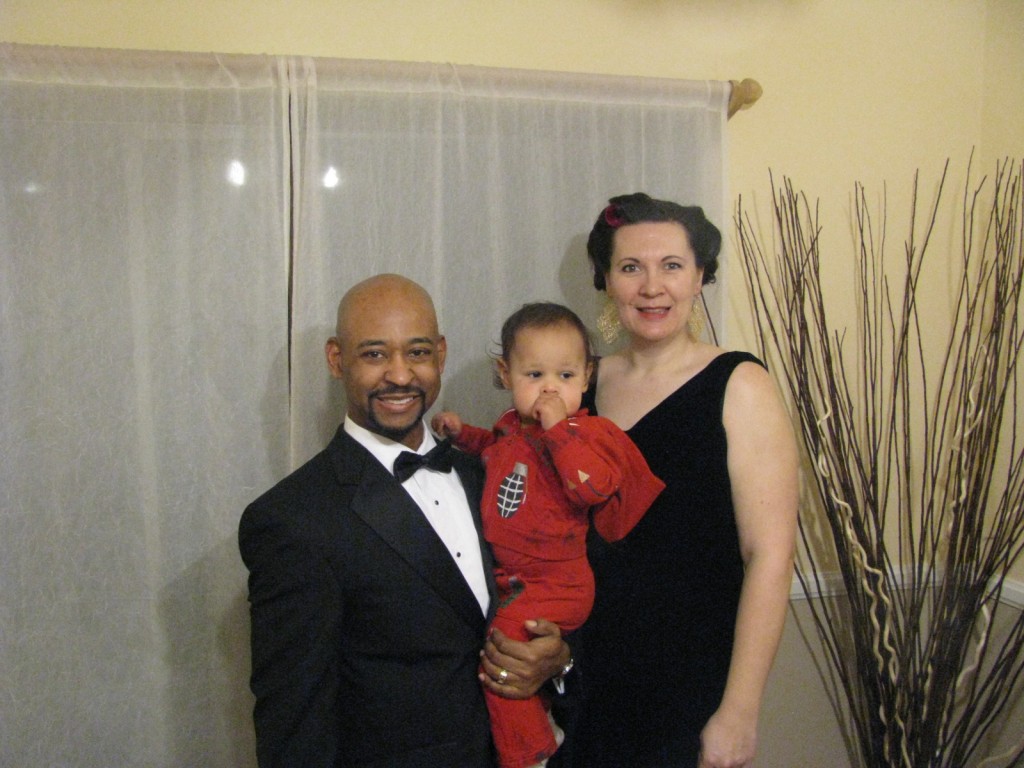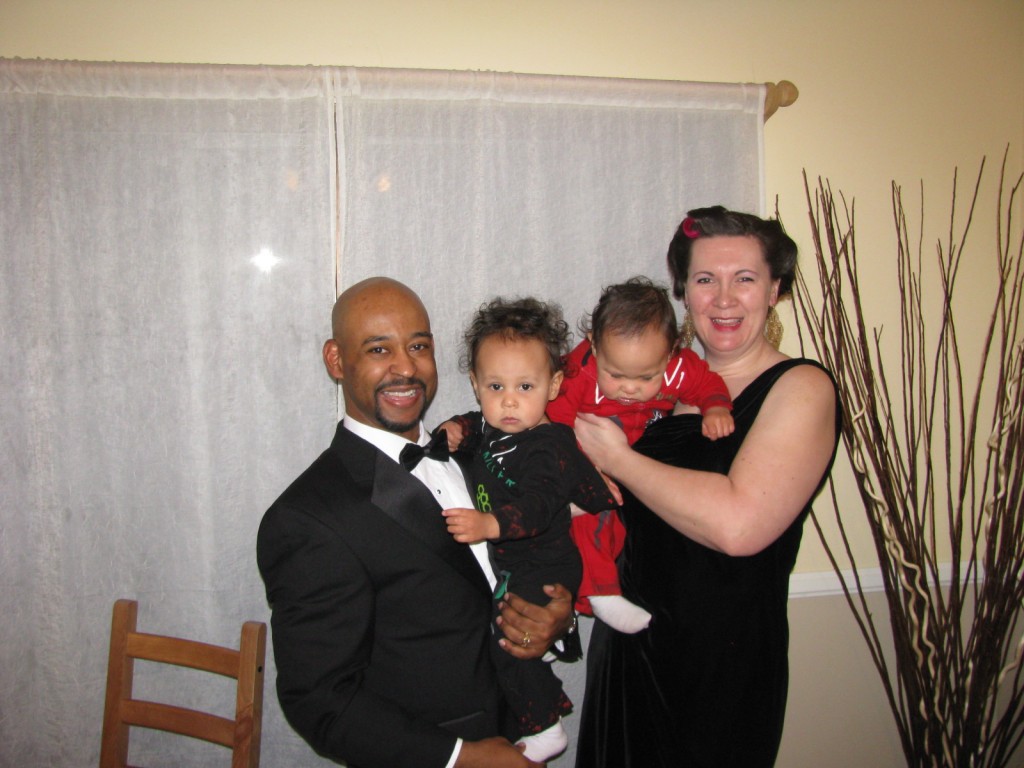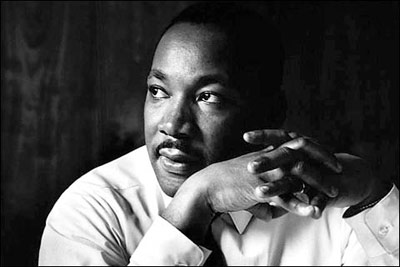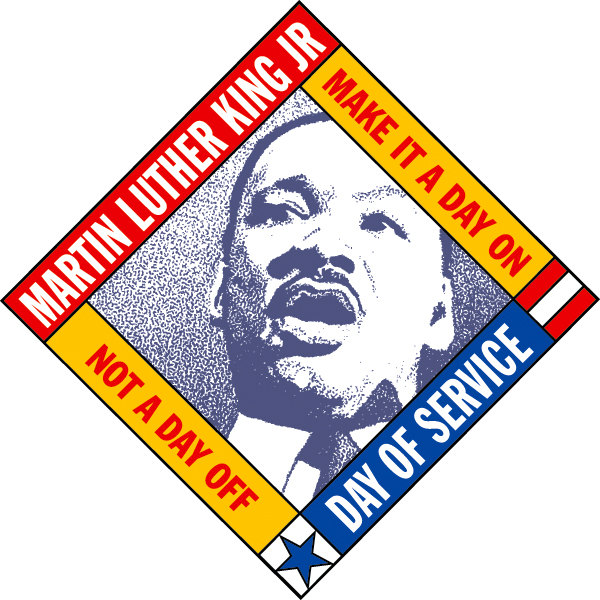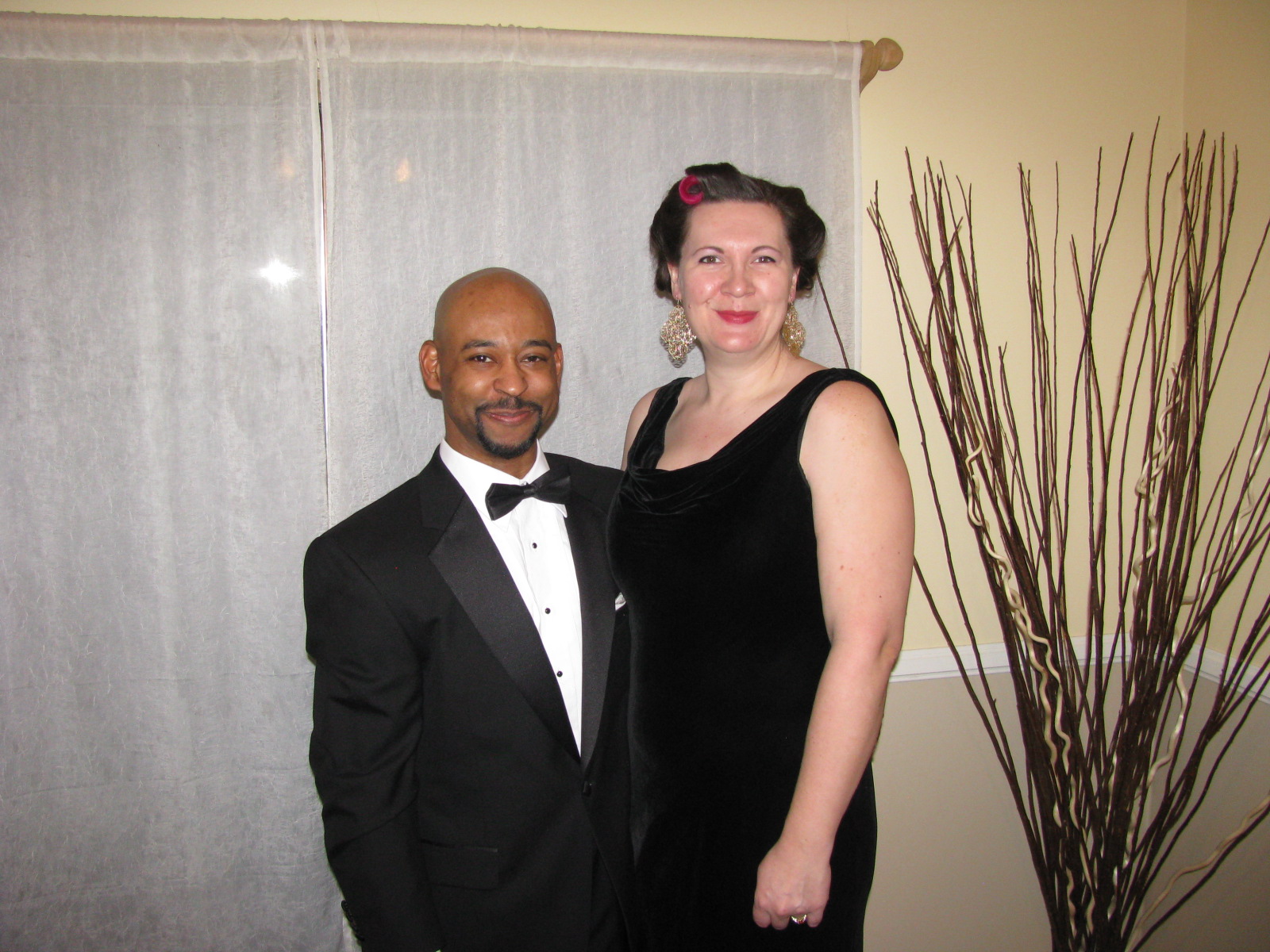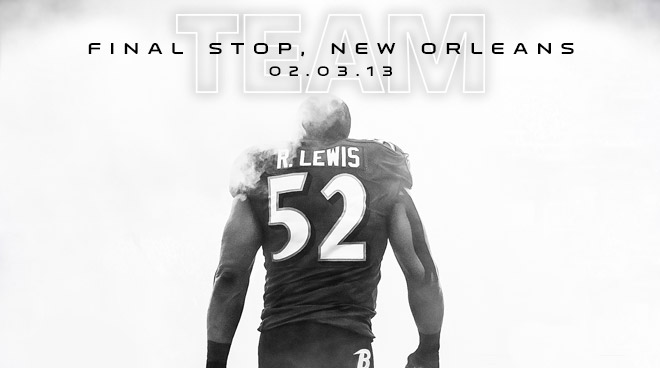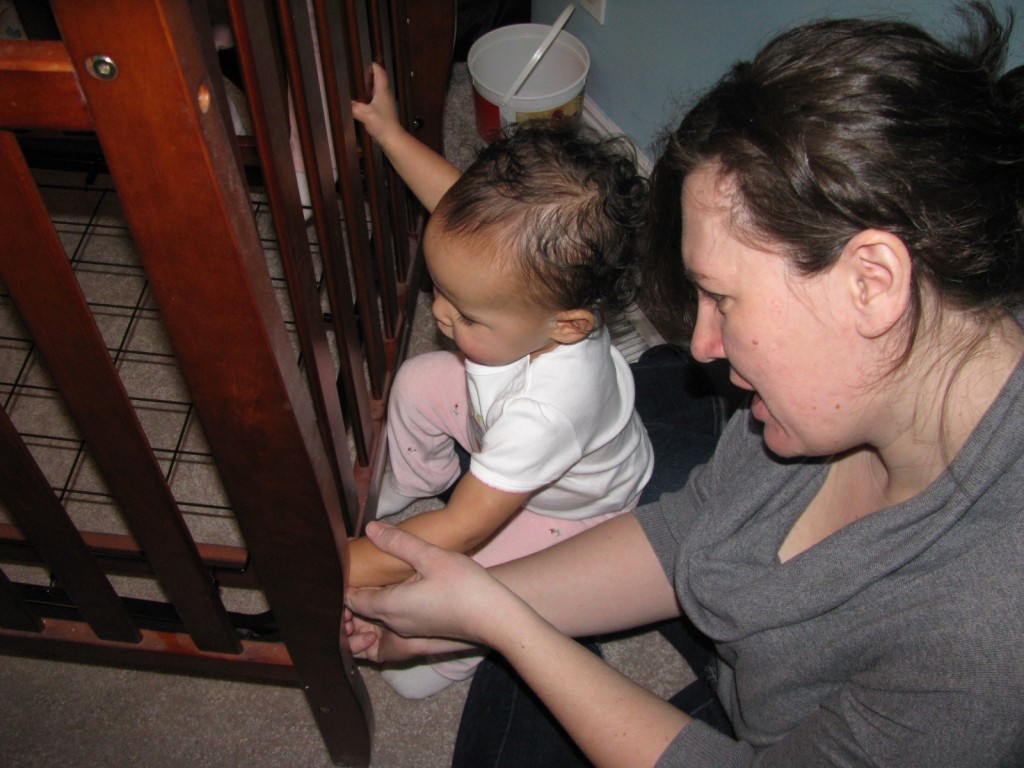Batter up!
baseball, books, business and economy, comics and animation, everyday glory, faith and religion, food for thought, games, geekery, health, history, kids, LEGO and Rokenbok, movies and TV, music, office antics, politics and law, the world, trains/model railroads No Comments »Thursday – 28 February 2013
A new NBN Thursday is here. So far, it’s not bad.
It’s also the end of February.
This morning, Diana was up a bit before Vanessa. In order to let Vanessa sleep a bit longer, brought her into our room. This appeased Diana… somewhat. So, I did what any father would do, I broke out the iPad and let her read/play with the Barnyard Dance book/app. This worked for a few minutes. Then, I switched over to Moo, Baa, La La La. That satisfied her for a little while, as well. Long enough for Vanessa to wake up and decide that she was ready to start the day.
Last night, Sara! and I watched Moneyball:
The characters were well-developed, not just cardboard cut-out caricatures. The dialogue was believable and realistic, not just a bunch of baseball-related cliches. The story also managed to show a bit of the off-the-field life of Pitt’s character, Billy Beane, and his journey from all-star golden boy in high school to a MLB player to general manager of the Oakland A’s.
All told, it was a good film. Sara! enjoyed it… though she qualified it by saying that it still wasn’t enough to make her like baseball.







Chew on This – Food for Thought – Black History Month
I didn’t get as many days filled in as I had hoped, but I could not let the month end without an entry:
- Daniel Hale Williams, Surgeon
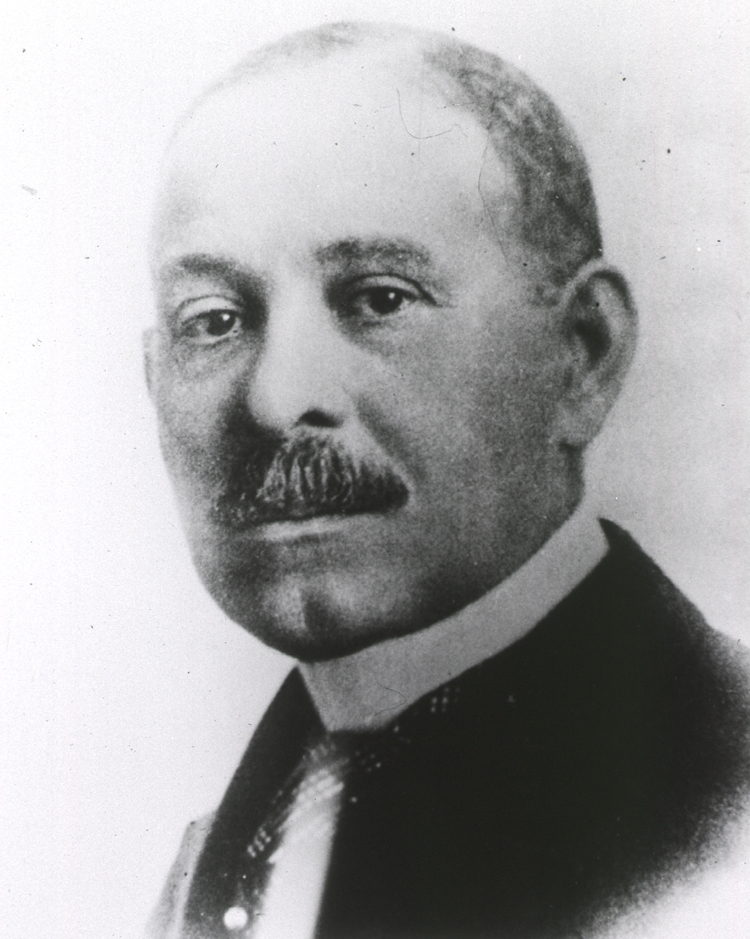
Daniel Hale Williams III was born on January 18, 1856, in Hollidaysburg, Pennsylvania, to Sarah Price Williams and Daniel Hale Williams II. The couple had several children, with the elder Daniel H. Williams inheriting a barber business. He also worked with the Equal Rights League, a black civil rights organization active during the Reconstruction era.After the elder Williams died, a 10-year-old Daniel was sent to live in Baltimore, Maryland, with family friends. He became a shoemaker’s apprentice but disliked the work and decided to return to his family, who had moved to Illinois. Like his father, he took up barbering, but ultimately decided he wanted to pursue his education. He worked as an apprentice with Dr. Henry Palmer, a highly accomplished surgeon, and then completed further training at Chicago Medical College.
Williams set up his own practice in Chicago’s Southside and taught anatomy at his alma mater, also becoming the first African-American physician to work for the city’s street railway system. Williams—who was called Dr. Dan by patients—also adopted sterilization procedures for his office informed by the recent findings on germ transmission and prevention from Louis Pasteur and Joseph Lister.
Due to the discrimination of the day, African-American citizens were still barred from being admitted to hospitals and black doctors were refused staff positions. Firmly believing this needed to change, in May 1891, Williams opened Provident Hospital and Training School for Nurses, the nation’s first hospital with a nursing and intern program that had a racially integrated staff. The facility, where Williams worked as a surgeon, was publicly championed by famed abolitionist and writer Frederick Douglass.
In 1893, Williams continued to make history when he operated on James Cornish, a man with a severe stab wound to his chest who was brought to Provident. Without the benefits of a blood transfusion or modern surgical procedures, Williams successfully sutured Cornish’s pericardium (the membranous sac enclosing the heart), becoming the first person to perform open-heart surgery. Cornish lived for many years after the operation.
In 1894, Williams moved to Washington, D.C., where he was appointed the chief surgeon of the Freedmen’s Hospital, which provided care for formerly enslaved African Americans. The facility had fallen into deep neglect and had a high mortality rate. Williams worked diligently on revitalization, improving surgical procedures, increasing institutional specialization, allowing public viewing of surgeries, launching ambulance services and adding a multiracial staff, continuing to provide opportunities for black physicians and nursing students.
And in 1895, he co-founded the National Medical Association, a professional organization for black medical practitioners, as an alternative to the American Medical Association, which didn’t allow African-American membership.
Williams left Freedmen’s Hospital in 1898. He married Alice Johnson, and the newlyweds moved to Chicago, where Williams returned to his work at Provident. Soon after the turn of the century, he worked at Cook County Hospital and later at St. Luke’s, a large medical institution with ample resources.
Beginning in 1899, Williams also made annual trips to Nashville, Tennessee, where he was a voluntary visiting clinical professor at Meharry Medical College for more than two decades. He became a charter member of the American College of Surgeons in 1913.
Daniel Hale Williams experienced a debilitating stroke in 1926 and died five years later, on August 4, 1931, in Idlewild, Michigan.
Today, Williams’s work as a pioneering physician and advocate for an African-American presence in medicine continues to be honored by educational institutions worldwide.
Stray Toasters
- A crack in civil rights law? Some justices think so
- Van Cliburn, pianist ‘who conquered Russia,’ dies at 78
- Control the Chaos with ‘Secrets of Happy Families’
- Robert Downey Jr. Says Being Recast as Iron Man Would “Probably Be The Best Thing in the World”
- Fun (and funny) LEGO pictures
- Pope Benedict XVI in final address: ‘Pray for me’
- I just had a conversation with my senior manager (a couple of steps up the ladder from me) about model railroads and trains. That was an unexpected fun spot in the middle of the day.
- Children Toil in India’s Mines, Despite Legal Ban
- Nostalgia vs. Narrative: A Series of Adventure Game Letters
- Beer Map: Two Giant Brewers, 210 Brands
- Fed Defends Stimulus in Testimony to Senate
Namaste.
Team DiVa Tuesday
everyday glory, kids, LEGO and Rokenbok, toys 3 Comments »Tuesday – 26 February 2013
The day is racing away, but I was bound and determined to get in a new Team DiVa Tuesday post!
As I’ve posted before, the girls are pretty fond of my LEGO magnets. VERY. FOND. INDEED. Though, with a limited number of magnets – and the girls not always being the best at sharing – there can be some… discontent.
Yesterday, Sara! scored a major “win” in the “New Toys for Team DiVa” department: Alphanumeric magnets. She picked up a set the other day, while shopping, and gave them to the girls when she got home from work yesterday. This was the result:
Yeah.
They apparently kept sticking magnets on the refrigerator and dishwasher in the same manner as seen in the video for at least fifteen minutes before I got home. Non-stop. This video was taken about 10 minutes after I got home. Playing with the magnets was even more fun/important to the girls than eating dinner. It was even more fun than getting ready for bed, too. Go figure.
But, the bottom line is: They had a lot of fun playing with them. And that’s the important thing.
Namaste.
Space: The Final Frontier…
business and economy, comics and animation, everyday glory, games, geekery, history, kids, LEGO and Rokenbok, movies and TV, music, politics and law, science and technology, space No Comments »Thursday – 21 February 2013
It’s No Bad News Thursday. That’s really all that needs to be said.
As I’ve mentioned, Team DiVa has a computer with a series of astronomy pictures as a screen saver in their room. The girls have been identifying things like “moon,” “stars” and the closest that they can get to “nebula” for weeks now. Tonight, Vanessa surprised me with how well she could say “Saturn” – granted, it sounded more like “Sa’UHN” – when its picture appeared on the monitor. Yet another proud daddy moment.
After Team DiVa was in bed, Sara! and I watched Alex Cross.
It wasn’t an awesome movie. I’m not sure what I expected, but what I got was Alex Cross in more of an action movie than a thriller (as we got used to with Morgan Freeman’s portrayals of Dr. Cross). It was… meh.
Oddly enough, though, I am curious about Tyler Perry’s Medea movies. I know that he’s made eleventy-seven of them, but I have never seen one. But, I’m considering it.
Chew on This – Food for Thought: Black History Month
Here are two items for Thursday:
- Neil deGrasse Tyson – Scientist, television personality, writer
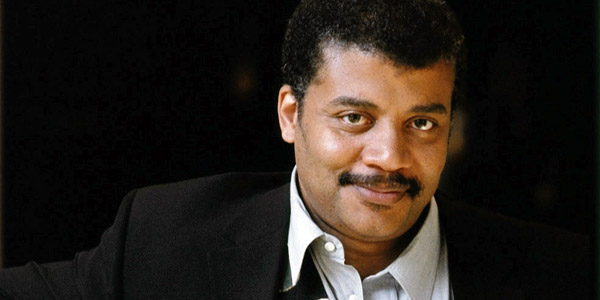 Tyson was born as the second of three children in the borough of Manhattan in New York City, but was raised in the Bronx. His mother, Sunchita Feliciano Tyson, was a gerontologist, and his father, Cyril deGrasse Tyson, was a sociologist, human resource commissioner for the New York City mayor John Lindsay and the first Director of Harlem Youth Opportunities Unlimited. Tyson attended the Bronx High School of Science (1972–1976, astrophysics emphasis) where he was captain of the wrestling team and was editor-in-chief of the school’s Physical Science Journal. Tyson had an abiding interest in astronomy since he was nine years old, following his visit to the Hayden Planetarium. He obsessively studied astronomy in his teens, and eventually even gained some fame in the astronomy community by giving lectures on the subject at the age of fifteen. Tyson recalls that “so strong was that imprint [of the night sky] that I’m certain that I had no choice in the matter, that in fact, the universe called me.”
Tyson was born as the second of three children in the borough of Manhattan in New York City, but was raised in the Bronx. His mother, Sunchita Feliciano Tyson, was a gerontologist, and his father, Cyril deGrasse Tyson, was a sociologist, human resource commissioner for the New York City mayor John Lindsay and the first Director of Harlem Youth Opportunities Unlimited. Tyson attended the Bronx High School of Science (1972–1976, astrophysics emphasis) where he was captain of the wrestling team and was editor-in-chief of the school’s Physical Science Journal. Tyson had an abiding interest in astronomy since he was nine years old, following his visit to the Hayden Planetarium. He obsessively studied astronomy in his teens, and eventually even gained some fame in the astronomy community by giving lectures on the subject at the age of fifteen. Tyson recalls that “so strong was that imprint [of the night sky] that I’m certain that I had no choice in the matter, that in fact, the universe called me.”
Astronomer Carl Sagan, who was a faculty member at Cornell University, tried to recruit Tyson to Cornell for undergraduate studies. During an interview with writer Daniel Simone, Tyson said, “Interestingly, when I applied to Cornell, my application dripped of my passion for the study and research of the Universe. Somehow the admissions office brought my application to the attention of the late Dr. Sagan, and he actually took the initiative and care to contact me. He was very inspirational and a most powerful influence. Dr. Sagan was as great as the universe, an effective mentor.” Tyson chose to attend Harvard University, however, where he majored in physics. He was a member of the crew team during his freshman year, but returned to wrestling, eventually lettering in his senior year. In addition to wrestling and rowing in college, he was active in dance in styles including jazz, ballet, Afro-Caribbean, and Latin Ballroom. Tyson earned aBachelor of Arts in physics from Harvard in 1980 and began his graduate work at the University of Texas at Austin, where he earned a Master of Arts in astronomy in 1983. In 1985, he won a gold medal with the University of Texas dance team at a national tournament in the International Latin Ballroom style. Tyson transferred from the University of Texas at Austin to Columbia University in 1988 after his committee was dissolved. At Columbia University, in 1989, he received a Master of Philosophy in astrophysics and, in 1991, he earned a doctor of philosophy in astrophysics.Tyson’s research has focused on observations in stellar formation and evolution as well as cosmology and galactic astronomy. He has held numerous positions at institutions including University of Maryland, Princeton University, the American Museum of Natural History, and Hayden Planetarium.Tyson has written a number of popular books on astronomy. In 1995, he began to write the “Universe” column for Natural History magazine. In a column he authored for the magazine in 2002, Tyson coined the term “Manhattanhenge” to describe the two days annually on which the evening sun aligns with the cross streets of the street grid in Manhattan, making the sunset visible along unobstructed side streets. Tyson’s column also influenced his work as a professor with The Great Courses.
In 2001, US President George W. Bush appointed Tyson to serve on the Commission on the Future of the United States Aerospace Industry and in 2004 to serve on the President’s Commission on Implementation of United States Space Exploration Policy, the latter better known as the “Moon, Mars, and Beyond” commission. Soon afterward he was awarded the NASA Distinguished Public Service Medal, the highest civilian honor bestowed by NASA.
In 2004, he hosted the four-part Origins miniseries of PBS’s Nova, and, with Donald Goldsmith, co-authored the companion volume for this series, Origins: Fourteen Billion Years Of Cosmic Evolution. He again collaborated with Goldsmith as the narrator on the documentary 400 Years of the Telescope which premiered on PBS in April 2009.
As director of the Hayden Planetarium, Tyson bucked traditional thinking in order to keep Pluto from being referred to as the ninth planet in exhibits at the center. Tyson has explained that he wanted to look at commonalities between objects, grouping the terrestrial planets together, the gas giants together, and Pluto with like objects and to get away from simply counting the planets. He has stated on The Colbert Report, The Daily Show, and BBC Horizon that this decision has resulted in large amounts of hate mail, much of it from children. In 2006, the International Astronomical Union (IAU) confirmed this assessment by changing Pluto to the dwarf planet classification. Daniel Simone wrote of the interview with Tyson describing his frustration. “For a while, we were not very popular here at the Hayden Planetarium.”
Tyson has been vice-president, president, and chairman of the board of the Planetary Society. He was also the host of the PBS program Nova ScienceNow until 2011. He attended and was a speaker at the Beyond Belief: Science, Religion, Reason and Survival symposium on November 2006. In 2007, Tyson, who is known for his vibrant character, cheerful demeanor, and awe of the vastness of the universe itself, was chosen to be a regular on The History Channel’s popular series The Universe.
In May 2009, he launched a one-hour radio talk show called StarTalk, which he co-hosted with comedienne Lynne Koplitz. The show was syndicated on Sunday afternoons on KTLK AM in Los Angeles and WHFS in Washington DC. The show lasted for thirteen weeks, but was resurrected in December 2010 and then, co-hosted with comedians Chuck Nice and Leighann Lord instead of Koplitz. Guests range from colleagues in science to celebrities such as Gza, Wil Wheaton, Sarah Silverman, and Bill Maher. The show is also available via the internet through a live stream or in the form of a podcast.
In April 2011, Tyson was the keynote speaker at the 93rd International Convention of the Phi Theta Kappa International Honor Society of the Two-year School. He and James Randi delivered a lecture entitled Skepticism, which related directly with the convention’s theme of The Democratization of Information: Power, Peril, and Promise.
In 2012, Tyson announced that he would appear in a YouTube series based on his radio show StarTalk. A premiere date for the show has not been announced, but it will be distributed on the Nerdist YouTube Channel.
- Sarah Vaughan – Singer
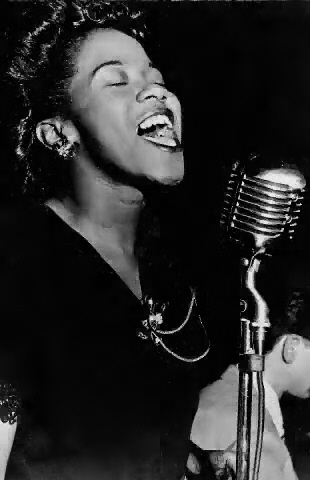
Sarah Lois Vaughan (March 27, 1924 – April 3, 1990) was an American jazz singer. Nicknamed “Sailor” (for her salty speech), “Sassy” and “The Divine One“, Sarah Vaughan was a Grammy Award winner. The National Endowment for the Arts bestowed upon her its “highest honor in jazz”, the NEA Jazz Masters Award, in 1989.Sarah began piano lessons at the age of seven, sang in the church choir and occasionally played piano for rehearsals and services. Vaughan developed an early love for popular music on records and the radio. In the 1930s, Newark had a very active live music scene and Vaughan frequently saw local and touring bands that played in the city at venues like the Montgomery Street Skating Rink. By her mid-teens, Vaughan began venturing (illegally) into Newark’s night clubs and performing as a pianist and, occasionally, singer, most notably at the Piccadilly Club and the Newark Airport USO.Vaughan initially attended Newark’s East Side High School, later transferring to Newark Arts High School, which had opened in 1931 as the United States’ first arts “magnet” high school. However, her nocturnal adventures as a performer began to overwhelm her academic pursuits and Vaughan dropped out of high school during her junior year to concentrate more fully on music. Around this time, Vaughan and her friends also began venturing across the Hudson River into New York City to hear big bands at the Apollo Theater in Harlem.Sometime in the fall of 1942 (when Sarah was 18 years old), Vaughan suggested that Robinson enter the Apollo Theater Amateur Night contest. Vaughan played piano accompaniment for Robinson, who won second prize. Vaughan later decided to go back and compete herself as a singer. Vaughan sang “Body and Soul” and won, although the exact date of her victorious Apollo performance is uncertain. The prize, as Vaughan recalled later to Marian McPartland, was US$10 and the promise of a week’s engagement at the Apollo. After a considerable delay, Vaughan was contacted by the Apollo in the spring of 1943 to open for Ella Fitzgerald.
Sometime during her week of performances at the Apollo, Vaughan was introduced to bandleader and pianist Earl Hines, although the exact details of that introduction are disputed. Billy Eckstine, Hines’ singer at the time, has been credited by Vaughan and others with hearing her at the Apollo and recommending her to Hines. After a brief tryout at the Apollo, Hines officially replaced his existing male singer with Vaughan on April 4, 1943.
Eckstine left the Hines band in late 1943 and formed his own big band with Gillespie, leaving Hines to become the new band’s musical director. Parker came along too, and the Eckstine band over the next few years would host a startling cast of jazz talent: Miles Davis, Kenny Dorham, Art Blakey, Lucky Thompson, Gene Ammons, Dexter Gordon, among others.
Vaughan accepted Eckstine’s invitation to join his new band in 1944, giving her an opportunity to develop her musicianship with the seminal figures in this era of jazz. Eckstine’s band also afforded her first recording opportunity, a December 5, 1944 date that yielded the song “I’ll Wait and Pray” for the Deluxe label. That date led to critic and producer Leonard Feather to ask her to cut four sides under her own name later that month for the Continental label, backed by a septet that included Dizzy Gillespie and Georgie Auld. Vaughan officially left the Eckstine band in late 1944 to pursue a solo career, although she remained very close to Eckstine personally and recorded with him frequently throughout her life.
Vaughan began her solo career in 1945 by freelancing in clubs on New York’s 52nd Street such as the Three Deuces, the Famous Door, the Downbeat and the Onyx Club. Vaughan also hung around the Braddock Grill, next door to the Apollo Theater in Harlem. After being invited by violinist Stuff Smith to record the song “Time and Again” in October, Vaughan was offered a contract to record for the Musicraft label by owner Albert Marx, although she would not begin recording as a leader for Musicraft until May 7, 1946. Vaughan’s recording success for Musicraft continued through 1947 and 1948.
A musicians union ban pushed Musicraft to the brink of bankruptcy and Vaughan used the missed royalty payments as an opportunity to sign with the larger Columbia record label. During her tenure at Columbia through 1953, Vaughan was steered almost exclusively to commercial pop ballads, a number of which had chart success.
Vaughan also achieved substantial critical acclaim. She won Esquire magazine’s New Star Award for 1947 as well as awards from Down Beat magazine continuously from 1947 through 1952, and from Metronome magazine from 1948 through 1953. A handful of critics disliked her singing as being “over-stylized”, reflecting the heated controversies of the time over the new musical trends of the late 40s. However, the critical reception to the young singer was generally positive.
Vaughan began recording for Roulette Records in April 1960, making a string of strong large ensemble albums arranged and/or conducted by Billy May, Jimmy Jones, Joe Reisman, Quincy Jones, Benny Carter, Lalo Schifrin, and Gerald Wilson. When her contract with Roulette ended in 1963, Vaughan returned to the more familiar confines of Mercury Records. At the conclusion of her Mercury deal in 1967, she was left without a recording contract for the remainder of the decade.
The seventies heralded a rebirth in Vaughan’s recording activity. In 1971, Bob Shad, who had worked with her as producer at Mercury Records, asked her to record for his new record label, Mainstream Records. Vaughan’s relationship with Mainstream soured in 1974; this left Vaughan again without a recording contract for three years.
In December 1974, Vaughan played a private concert for the United States President Gerald Ford and French president Giscard d’Estaing during their summit on Martinique.
Vaughan remained quite active as a performer during the 1980s and began receiving awards recognizing her contribution to American music and status as an important elder stateswoman of jazz.
Vaughan’s final complete album was Brazilian Romance, produced and composed by Sérgio Mendes and recorded primarily in the early part of 1987 in New York and Detroit. In 1988, Vaughan contributed vocals to an album of Christmas carols recorded by the Mormon Tabernacle Choir with the Utah Symphony Orchestra and sold in Hallmark Cards stores. In 1989, Quincy Jones’ album Back on the Block featured Vaughan in a brief scatting duet with Ella Fitzgerald. This was Vaughan’s final studio recording and, fittingly, it was Vaughan’s only formal studio recording with Fitzgerald in a career that had begun 46 years earlier opening for Fitzgerald at the Apollo.
Vaughan is featured in a number of video recordings from the 1980s. Sarah Vaughan Live from Monterey was taped in 1983 or 1984 and featured her working trio with guest soloists. Sass and Brass was taped in 1986 in New Orleans and also features her working trio with guest soloists, including Dizzy Gillespie and Maynard Ferguson. Sarah Vaughan: The Divine One was featured in the American Masters series on PBS. Also in 1986, on Independence Day in a program nationally-televised on PBS she performed with the National Symphony Orchestra, conducted by Mstislav Rostropovich, in a medley of songs composed by George Gershwin
In 1989, Vaughan’s health began to decline, although she rarely revealed any hints in her performances. She canceled a series of engagements in Europe in 1989 citing the need to seek treatment for arthritis in the hand, although she was able to complete a later series of performances in Japan. During a run at New York’s Blue Note Jazz Club in 1989, Vaughan received a diagnosis of lung cancer and was too ill to finish the final day of what would turn out to be her final series of public performances.
Vaughan returned to her home in California to begin chemotherapy and spent her final months alternating stays in the hospital and at home. Vaughan grew weary of the struggle and demanded to be taken home, where she died on the evening of April 3, 1990, while watching a television movie featuring her daughter, a week after her 66th birthday.
Stray Toasters
- The Powerpuff… Avengers?!
Yes, yes ,indeed. - The PlayStation 4 Is Here (Update: Sort Of)
- Graphene supercapacitors could make batteries obselete
- There’s a little black spot on the sun today
It’s the same old thing as yesterday.
No. There really is a black spot on the sun. 
- Law Change Makes It Harder to Unlock Cell Phones
- This LEGO Replica of the Ghostbusters Headquarters Is a Labor of Love
- Office Depot and Office Max are merging. Will the new company be Max Depot? Depot Max? DeMax? Maxot? Who knows?!
Namaste.
Respond Vibrate Feedback Resonate
art, business and economy, comics and animation, computers, dining and cuisine, event, everyday glory, family and friends, food for thought, geekery, history, human of the day, movies and TV, office antics, science and technology, toys No Comments »Wednesday – 13 February 2013
New comics day? Yep
Movie Date Night with Sara!? Yep.
And, it’s my sister, Rana’s, birthday:
Last night, Sara! fixed jambalaya for dinner, in honor of Fat Tuesday. As always, it was very good.
This morning, I arrived in the office to find out that I had three meetings scheduled back-to-overlapping-back to slightly-more-breathing-room back. Yay. Fortunately, the first meeting was rescheduled for tomorrow.
As I mentioned above, tonight is Movie Date Night. It’s also my pick for a movie… and I have no idea what tonight’s selection will be.
Chew on This – Food for Thought: Black History Month
Today’s item is: Negro Romance Comics
Negro Romance was a romance comic book published in the 1950s by Fawcett Comics (which through a series of sales and acquisitions, is now part of Warner Communications, which owns DC Comics). It is remarkable in eschewing African-American stereotypes, telling stories interchangeable with those told about white characters. The comic even mentions college, which was relatively uncommon in the 1950s, even moreso among African-Americans. Negro Romance ran for only three issues.
It was developed as an experiment in expanding into the romance market, conceived by editor Roy Ald, who was European-American, and written by him without credit. It was illustrated by Alvin Hollingsworth, the first African-American artist hired by Fawcett.
Because of their obscurity and rarity, the Negro Romance issues sell for hundreds of dollars each.
The PBS series History Detectives also did a feature on African-American Comic Books:
References:
Stray Toasters
- I am really enjoying Strip the City on Discovery’s The Science Channel
- DC Comics Responds to Orson Scott Card Backlash
I hadn’t followed the story behind Card’s hiring, so hearing that there was backlash was odd… but now that I know, it makes this strip from The Gutters make much more sense. - Why US Internet Access Is Slow and Expensive

- Mattel Unveils 1966 ‘Batman’ TV Series Ken and Barbie Catwoman
- HulaBunny.com – the art of Anand Duncan
Yeah, that’s it.
Namaste.
Meetings? Oh, yes, we have meetings.
art, books, comics and animation, event, everyday glory, faith and religion, food for thought, history, kids, movies and TV, office antics, science and technology, sports No Comments »Tuesday – 12 February 2013
It’s Teleconference Tuesday. And the best way to start a telecon is to use the wrong meeting ID… and therefore wind up six minutes late to the conference that you thought you were three minutes early to. *grlbsnrkx*
::: rest of the day :::
The second meeting wasn’t too bad. Thankfully.
Team DiVa Tuesday
Here’s a couple of quick shots of the ladies of Team DiVa:
Chew on This – Food for Thought: Black History Month
Today’s person of note is: Garrett Morgan – Entrepreneur, writer, inventor
Born in Paris, Kentucky, on March 4, 1877, Garrett Morgan was the seventh of 11 children. His mother, Elizabeth (Reed) Morgan, was of Indian and African descent, and the daughter of a Baptist minister. It is uncertain whether Morgan’s father was Confederate Colonel John Hunt Morgan or Sydney Morgan, a former slave freed in 1863. Morgan’s mixed race heritage would play a part in his business dealings as an adult.
When Morgan was in his mid teens, he moved to Cincinnati, Ohio, to look for work, and found it as a handyman to a wealthy landowner. Although he only completed an elementary school education, Morgan was able to pay for more lessons from a private tutor. But jobs at several sewing-machine factories were to soon capture his imagination and determine his future. Learning the inner workings of the machines and how to fix them, Morgan obtained a patent for an improved sewing machine and opened his own repair business.
Morgan’s business was a success, and it enabled him to marry a Bavarian woman named Mary Anne Hassek, and establish himself in Cleveland. (He and his wife would have three sons during their marriage.)
Following the momentum of his business success, Morgan’s patented sewing machine would soon pave the way to his financial freedom, albeit in a rather unorthodox way: In 1909, Morgan was working with sewing machines in his newly opened tailoring shop—a business he had opened with wife Mary, who had experience as a seamstress—when he encountered woolen fabric that had been scorched by a sewing-machine needle. It was a common problem at the time, since sewing-machine needles ran at such high speeds. In hopes of alleviating the problem, Morgan experimented with a chemical solution in an effort to reduce friction created by the needle, and subsequently noticed that the hairs of the cloth were straighter.
After trying his solution to good effect on a neighboring dog’s fur, Morgan finally tested the concoction on himself. When that worked, he quickly established the G.A. Morgan Hair Refining Company and sold the cream to African Americans. The company was incredibly successful, bringing Morgan financial security and allowing him to pursue other interests.
In 1914, Morgan patented a breathing device, or “safety hood,” providing its wearers with a safer breathing experience in the presence of smoke, gases and other pollutants. Morgan worked hard to market the device, especially to fire departments, often personally demonstrating its reliability in fires. Morgan’s breathing device became the prototype and precursor for the gas masks used during World War I, protecting soldiers from toxic gas used in warfare. The invention earned him the first prize at the Second International Exposition of Safety and Sanitation in New York City.
There was some resistance to Morgan’s devices among buyers, particularly in the South, where racial tension remained palpable despite advancements in African-American rights. In an effort to counteract the resistance to his products, Morgan hired a white actor to pose as “the inventor” during presentations of his breathing device; Morgan would pose as the inventor’s sidekick, disguised as a Native American man named “Big Chief Mason,” and, wearing his hood, enter areas otherwise unsafe for breathing. The tactic was successful; sales of the device were brisk, especially from firefighters and rescue workers.
In 1916, the city of Cleveland was drilling a new tunnel under Lake Erie for a fresh water supply. Workers hit a pocket of natural gas, which resulted in a huge explosion and trapped workers underground amidst suffocating noxious fumes and dust. When Morgan heard about the explosion, he and his brother put on breathing devices, made their way to the tunnel and entered as quickly as possible. The brothers managed to save two lives and recover four bodies before the rescue effort was shut down.
Despite his heroic efforts, the publicity that Morgan garnered from the incident hurt sales; the public was now fully aware that Morgan was an African American, and many refused to purchase his products. Adding to the detriment, neither the inventor nor his brother were fully recognized for their heroic efforts at Lake Erie—possibly another effect of racial discrimination. Morgan was nominated for a Carnegie Medal for his efforts, but ultimately wasn’t chosen to receive the award. Additionally, some reports of the explosion named others as the rescuers.
While the public’s lack of acknowledgement for Morgan’s and his brother’s roles at the Cleveland explosion was undoubtedly disheartening, Morgan was a voracious inventor and observer who focused on fixing problems, and soon turned his attention to all kinds of things, from hats to belt fasteners to car parts.
The first black man in Cleveland to own a car, Morgan worked on his mechanical skills and developed a friction drive clutch. Then, in 1923, he created a new kind of traffic signal, one with a warning light to alert drivers that they would need to stop, after witnessing a carriage accident at a particularly problematic intersection in the city. Morgan quickly acquired patents for his traffic signal—a rudimentary version of the modern three-way traffic light—in the United States, Britain and Canada, but eventually sold the rights to General Electric for $40,000.
Outside of his inventing career, Morgan diligently supported the African-American community throughout his lifetime. He was a member of the newly formed National Association for the Advancement of Colored People, was active in the Cleveland Association of Colored Men, donated to Negro colleges and opened an all-black country club. Additionally, in 1920, he launched the African-American newspaper the Cleveland Call (later named the Call and Post).
reference: Biography.com
Stray Toasters
- Celebrating Women Authors of Science Fiction and Fantasy
- Burn Notice Science Challenge
- Comic Characters Look Right at Home in the Pixar Universe
- IOC drops wrestling from 2020 Olympics
- Escape the Winter Blahs This Weekend: 10 Book Genres to Get You Started
- Successor to Benedict Will Lead a Church at a Crossroads
- Presidential cyber security order almost ready
Namaste.
Good day, Monday…
art, everyday glory, faith and religion, family and friends, football, games, geekery, movies and TV, office antics, politics and law, style and fashion, Whiskey Tango Foxtrot...?!, zombies No Comments »Monday – 11 January 2013
A new week is upon us. ‘Nuff said.
This past weekend has been a bit of a whirlwind, but it’s also been quite fantastic. Friday night, I had a classmate from high school spend the evening with Sara!, Team DiVa and me:
James (above) came to town a couple of months ago for a conference. Of course, his schedule was ever-so-slightly full, but he was due to come back to town this past week. We determined that we’d try to arrange our schedules so that we could see each other for a while. And we did. And, it was absolutely fantastic to see him.
I did some mental gymnastics and realized that before Friday, I hadn’t seen an of my classmates since graduation. Many. Many. Seasons. Past.
Saturday, Sara! had brunch with a friend, so Team DiVa and I spent the morning hanging out. It was a pretty quiet day around the homestead. After the little ladies went to bed, Sara! and I watched Juan of the Dead for Action Movie Saturday:
Sara! had mentioned wanting to see this movie a few months ago, as this was apparently the first Cuban zombie film, , but it had fallen off my radar. It showed up in a Netflix envelope a few nights ago and we watched it. And it was worth it.
I’ll be honest, I drew more than one comparison to Shaun of the Dead while watching it. There were a number of things that were, indeed, similar. But, there was something that really set the movie apart: The Cuban point of view. That was something that I hadn’t expected, for some reason. And that’s a shame. Because it framed many/most of the sensibilities of the movie. As Sara! put it:
If you were going to get some of your friends together and make a movie, this is totally the movie that you would make.
And, she’s right. And with that recommendation, I recommend it, as well.
Sunday, I had a early morning: I had to be at work at 7:30 for a scheduled server maintenance window. 7:30. AM. On a Sunday. Yeah. And, what made it even better: It snowed Saturday. For the most part, UDoT did a decent job of plowing I-215; I just wish that they had done as solid a job on I-15. But, I made it to work. And the maintenance project went rather hitch-free. And I made it back home without incident. And, on the plus side: My work week is already 5 hours old. That’s going to be nice come Friday.
We spent the afternoon in, but had dinner with Sara!’s parents and Uncle Mike, who was in town for the day. Back home to put Team DiVa to bed and then it was time for the new episode of The Walking Dead. And, we even caught some of the Grammy Awards.
Chew on This: Food for Thought – Black History Month
Here are three more people of note:
- Judith Jamison – Dancer, choreographer, artistic director.
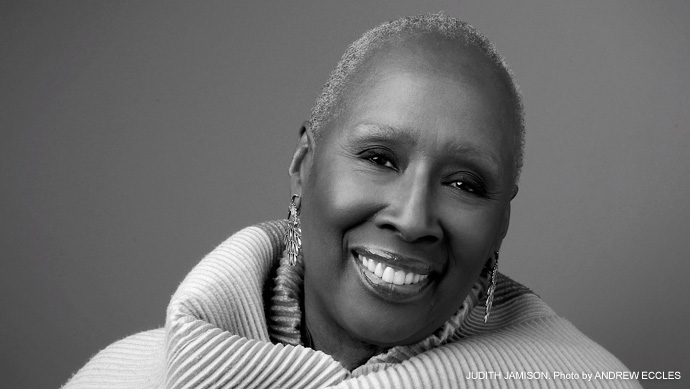
Born Judith Ann Jamison on May 10, 1943 in Philadelphia, Pennsylvania. She trained early in dance and music and attended the Philadelphia Dance Academy before performing with American Ballet Theatre in 1964. A year later, she moved to New York City to join the Alvin Ailey company and quickly became a principal dancer. Jamison stayed with Alvin Ailey until 1980 and during that time gave several notable performances, including 1967’s The Prodigal Prince, 1969’s Masekela Language and 1971’s Cry, which was a 15-minute solo piece. Audiences also remember 1976’s Pas de Duke, a duet with Mikhail Baryshnikov set to the music of Duke Ellington.After leaving the company to appear in the Broadway musical Sophisticated Ladies, Jamison began choreographing her own works and started the Jamison Project in 1988. A year later, shortly after Ailey’s death, Jamison became artistic director of Alvin Ailey American Dance Theater.
Jamison has been the recipient of numerous awards, including the Kennedy Center Honors in 1999 and the National Medal of Arts in 2001. Her autobiography, Dancing Spirit, was published in 1993.
- Simmie Knox – Artist
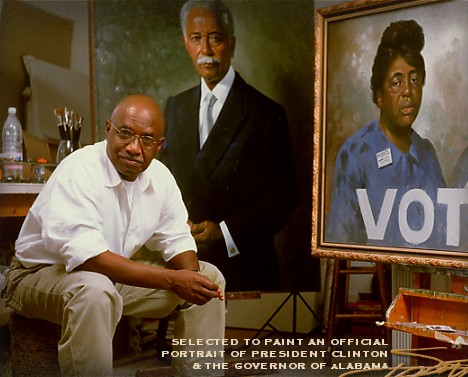
Born on August 18, 1935, in Aliceville, Alabama, leading African American portrait artist Simmie Knox has created vivid, lifelike renderings of such luminaries as President Bill Clinton and U.S. Supreme Court Justice Ruth Bader Ginsburg.Knox is the son of a carpenter and mechanic. But he spent many of his childhood years in the care of other family members after his parents divorced. Knox grew up poor with most of his family working as sharecroppers, and he himself took to the fields when he was old enough. Later Knox went to live with his father and stepmother in Mobile, Alabama. There he loved to make little sketches and to play baseball. One of his childhood friends was baseball legend Hank Aaron. At the age of 13, Knox was struck in the eye with a baseball. With encouragement from his teachers at his Catholic school, he started drawing as a way to help his eye recover from the injury. The nuns who educated him recognized his talent and arranged for him to have lessons from a local postal worker. No formal art education was available at his segregated school.After graduating from Central High School in Mobile, Alabama, in 1956, Knox spent several years serving in the military. He then attended Delaware State College as a biology major. While he didn’t excel at science, Knox did some wonderful sketches of microorganisms. One of his professors recommended that he take some art classes. While at Delaware State, Knox completed a full-sized self-portrait, one of his notable early art works. After completing his studies at the University of Delaware in 1967, Knox enrolled at the Tyler School of Art at Temple University. There, he earned a bachelor degree in fine arts in 1970 and a master’s degree in fine arts two years later. At the time, abstract art was all the rage. Knox painted in this style for a time and even got the chance to display his works at a prominent Washington, D.C. gallery. His paintings hung alongside Roy Lichtenstein and other leading artists in this show.
Still Knox wasn’t completely satisfied with his abstract work. He painted a portrait of freed slave and prominent abolitionist Frederick Douglass in 1976, which now part of the collection at the Smithsonian Institution. In addition to painting, Knox worked extensively in art education. He held many teaching positions, including being an instructor at the Duke Ellington School of the Arts from 1975 to 1980.
By the early 1980s, Knox had devoted himself to realistic portrait work. He explained to The New York Times, “With abstract painting, I didn’t feel the challenge. The face is the most complicated thing there is. The challenge is finding that thing, that makes it different from another face.” Knox found a famous patron in 1986 when he met comedian Bill Cosby. Cosby became an ardent supporter of Knox’s work, hiring for portraits of himself and his family. He also encouraged friends to commission Knox for paintings as well.
Knox soon landed an important assignment: to capture the image of legendary U.S. Supreme Court Justice Thurgood Marshall. Marshall “could tell I was nervous,” Knox told American Artist magazine, adding, “But he told jokes; he told stories about his life. I came away feeling so good about the man.” He completed Marshall’s portrait in 1989 and continued to receive new commissions. Over the years, Knox painted the likeness of baseball great Hank Aaron, former New York City mayor David Dinkins, historian John Hope Franklin and Supreme Court Justice Ruth Bader Ginsburg among other famous names.
In 2000, Knox received his most famous assignment to date. He was selected to paint the official White House portraits of President Bill Clinton and First Lady Hillary Clinton. With this commission, Knox made history. “I realize there has never been an African American to paint a portrait of a president and, being the first, that’s quite an honor and quite a challenge,” he told ABC News. Knox and Bill Clinton bonded over a shared love of jazz.
Knox’s paintings of the Clintons were revealed to the public in a special ceremony at the White House in 2004.Knox works out of his studio—a former garage—at his home in Silver Spring, Maryland. He and his wife Roberta have two children together, Amelia and Zachary. Knox also has a daughter, Sheri, from his first marriage.
-
Alain Locke – Writer, philosopher, educator
Alain Locke was born in Philadelphia, Pennsylvania on September 13, 1885 to Pliny Ishmael Locke (1850–1892) and Mary Hawkins Locke (1853–1922). In 1902, he graduated from Central High School in Philadelphia, second in his class.
In 1907, Locke graduated from Harvard University with degrees in English and philosophy. He was the first African-American Rhodes Scholar. He formed part of the Phi Beta Kappa Society. Locke was denied admission to several Oxford colleges because of his race before finally being admitted to Hertford College, where he studied literature, philosophy, Greek, and Latin, from 1907–1910. In 1910, he attended the University of Berlin, where he studied philosophy.
Locke received an assistant professorship in English at Howard University, in Washington, D.C. While at Howard University, he became a member of Phi Beta Sigma fraternity.
Locke returned to Harvard in 1916 to work on his doctoral dissertation, The Problem of Classification in the Theory of Value. In his thesis, he discusses the causes of opinions and social biases, and that these are not objectively true or false, and therefore not universal. Locke received his PhD in philosophy in 1918. Locke returned to Howard University as the chair of the department of philosophy, a position he held until his retirement in 1953.
Locke promoted African-American artists, writers, and musicians, encouraging them to look to Africa as an inspiration for their works. He encouraged them to depict African and African-American subjects, and to draw on their history for subject material. Locke edited the March 1925 issue of the periodical Survey Graphic, a special on Harlem and the Harlem Renaissance, which helped educate white readers about its flourishing culture. Later that year, he expanded the issue into The New Negro, a collection of writings by African Americans, which would become one of his best known works. His philosophy of the New Negro was grounded in the concept of race-building. Its most important component is overall awareness of the potential black equality; no longer would blacks allow themselves to adjust themselves or comply with unreasonable white requests. This idea was based on self-confidence and political awareness. Although in the past the laws regarding equality had been ignored without consequence, Locke’s philosophical idea of The New Negro allowed for fair treatment. Because this was an idea and not alaw, its power was held in the people. If they wanted this idea to flourish, they were the ones who would need to “enforce” it through their actions and overall points of view. Locke has been said to have greatly influenced and encouraged Zora Neale Hurston.
Stray Toasters
- Secret Hero Life – Pop Icons
- LEGO DUPLO: Read! Build! Play!
- Pope Benedict XVI to resign
- I need to log into either DCUO or STO and get some gaming in…
- NFL Power Rankings: Ravens earn top spot going into offseason
- A Simple Guide on Dress Shoes
- Young, Liberal and Open to Big Government
- Masters of Teras Kasi
I should probably post this before I forget. Again. For another two hours.
Namaste.
Thursday in the valley
art, business and economy, comics and animation, everyday glory, food for thought, football, geekery, history, kids, movies and TV, music, space No Comments »Thursday – 07 February 2013
It’s No Bad News Thursday. ‘Nuff said.
There was fog in the valley, at least in the central/north part. The trees around here are coated with ice crystals, but not as much sheen as after an ice storm.
Last night, Sara! and I watched The Rescuers.
It’s her favorite Disney movie. For her, the movie holds fun childhood memories in much the same way that Superman: the Movie does for me and is my favorite movie. Somehow, I’d never seen this movie before. It was a little darker than I would have expected… especially from Disney. I was also pleasantly surprised to see hear Bob Newhart and Eva Gabor in the starring roles. And I can’t imagine anyone else in those roles. All told, it was a fun movie and I enjoyed it.
After the movie, and after flipping channels for a bit, I landed on The Science Channel. We watched Dark Matters: Twisted But True. Interesting show, but it’s made better by being hosted by John Noble (Walter Bishop on Fringe).
Chew on This – Food for Thought: Black History Month
Today’s person of note is: Marvin Gaye
Marvin Pentz Gay Jr. (he added the “e” to his last name alter in life) was born in Washington, D.C. on April 2, 1939. Gaye was raised under the strict control of his father, Rev. Marvin Gay Sr., the minister at a local church, against a bleak backdrop of widespread violence in his neighborhood.
Throughout his childhood, Marvin Gaye often found peace in music, mastering the piano and drums at a young age. Until high school, his singing experience was limited to church revivals, but soon he developed a love for R&B and doo-wop that would set the foundation for his career. In the late 1950s, Gaye joined a vocal group called The New Moonglows. The talented singer had a phenomenal range that spanned three vocal styles and he soon impressed the group’s founder, Harvey Fuqua. It wasn’t long before Gaye and Fuqua both came to the attention of Detroit music impresario Berry Gordy and were signed to Gordy’s legendary Motown Records.
Gaye’s first certified hit under his own name wouldn’t come until 1962, but his early years at Motown were full of behind-the-scenes successes. He was a session drummer for Motown legends such as Little Stevie Wonder, The Supremes, The Marvelettes, and Martha and the Vandellas. Showing his stripes as Motown’s renaissance man, Gaye went on to break into the Top 40 for the first time on his own in 1962 with his solo single “Hitch Hike.” Throughout the 1960s, Gaye would show his immense range, churning out solo dance hits and romantic duets with hit-makers like Diana Ross and Mary Wells. “Can I Get a Witness” and “I Heard It Through The Grapevine” (vide0) were some of Gaye’s biggest hits of the period, the latter achieving its place as Motown’s bestselling single of the 1960s. For three high-flying years, Gaye and Tammi Terrell wowed the country with their soaring duet performances of songs like “Ain’t No Mountain High Enough” (video) and “If I Could Build My Whole World Around You”. Unfortunately, their reign as the Royal Couple of R&B ended when Terrell succumbed to a brain tumor in 1970. His beloved partner’s death ushered in a dark period for the singer, who swore never to partner with another female vocalist and threatened to abandon the stage for good.
In 1970, inspired by escalating violence and political unrest over the Vietnam War, Gaye wrote the landmark song “What’s Going On.” (video) Despite clashes with Motown over the song’s creative direction, the single was released in 1971 and became an instant smash. Its success prompted Gaye to take even more risks, both musically and politically. When it was released in the spring of 1971, the What’s Going On album served to open Gaye up to new audiences while maintaining his Motown following.
Departing from the tried and true Motown formula, Gaye went out on his own artistically, paving the way for other Motown artists like Stevie Wonder and Michael Jackson to branch out in later years. Beyond influencing his peers, the album garnered widespread critical acclaim, winning the Rolling Stone Album of the Year award.
In 1972, Gaye moved to Los Angeles and soon met Janis Hunter,who would later become his second wife. Inspired in part by his newfound independence, Gaye recorded one of the most revered love anthems of all time, “Let’s Get It On.” (video) The song became his second number one Billboard hit, cementing his crossover appeal once and for all. Shortly afterwards, Motown pushed Gaye into touring to capitalize on his most recent success; reluctantly the singer-songwriter returned to the stage.
In 1975, Gaye’s wife Anna Gordy — Barry Gordy’s daughter — filed for divorce, and two years later Gaye married Hunter, who had by then given birth to their daughter, Nona (born September 4, 1974) and their son Frankie (born November 16, 1975). Gaye also had an adopted son (Marvin Pentz Gaye III) from his previous marriage. The singer’s marriage to Hunter proved short lived and tumultuous, ending in divorce in 1981.
Through most of the mid-1970s, Gaye was touring, collaborating or producing. Working with Diana Ross and The Miracles, he would put off releasing another solo album until 1976. He continued touring after the release of I Want You (1976) and released his last album for Motown Records (Here, My Dear) in 1978. After two decades at Motown, Gaye signed with CBS’s Columbia Records in 1982 and began to work on his last album, Midnight Love. The lead single from that album, “Sexual Healing,” (video) became a huge comeback hit for the R&B star and earned him his first two Grammy Awards and an American Music Award for Favorite Soul Single.
Despite his successful comeback in the early 1980s, Gaye struggled badly with the substance abuse and bouts of depression that had plagued him for most of his life. After his last tour, he moved into his parents’ house. There he and his father fell into a pattern of violent fights and quarrels that recalled conflicts that had haunted the family for decades. On April 1, 1984, Marvin Gaye Sr. shot and killed his son after a physical altercation; the father claimed he acted in self-defense but would later be convicted of involuntary manslaughter.
Three years after his death, Marvin Gaye Jr. was inducted into the Rock and Roll Hall of Fame. Creating beautiful art from a troubled life, Gaye again and again brought his vision, range, and artistry to the world stage. At the end of his career, he admitted he no longer made music for pleasure; instead, he said, “I record so that I can feed people what they need, what they feel. Hopefully, I record so that I can help someone overcome a bad time.”
Stray Toasters
- Kicking Cones – the art of Katrina Constantine
- 5 Astronauts More Badass Than Any Action Hero Movie
- Comixology is having a Black History Month sale. I’m a bit surprised by and pleased by this.
- Metro areas’ credit ratings revealed
- Pixar Animator Recaps the NFL Season in the Best Possible Way
Many of these were good, but (not surprisingly) I was particularly taken with the Ravens-related pictures:

- Randomly generate conspiracy theories with this conspiracy theory generator
- …which, naturally, reminded me of The SCP Foundation.
- ACLU Guide: Tips for Protecting User Privacy and Free Speech in 2013
- I am actually giving serious consideration to watching the unaired pilot for David E. Kelley’s take on Wonder Woman. I should check to see if there are drinking game rules to it somewhere in the æther.
Namaste.
Back on the air
books, computers, everyday glory, family and friends, food for thought, football, games, geekery, history, kids, LEGO and Rokenbok, movies and TV, people, politics and law, science and technology, the world No Comments »Wednesday – 06 February 2013
Not only is it midweek…
Nor is it just new comics day…
Or even Movie Date Night with Sara!…
Today is my niece, Grace’s, fifth birthday:
I first met Grace about a week after she was born. Since then (and mostly through the marvels of modern technology), I have watched as she’s grown into a lovely, fun, and very precocious little girl:
Chew on This: Food for Thought – Black History Month
Since I’m a few days behind, it’s time to play “catch up” with our people of interest:
- George Washington Carver
 George Washington Carver (by January 1864 – January 5, 1943), was an American scientist, botanist, educator, and inventor.Carver was born into slavery in Diamond Grove, Newton County, near Crystal Place, now known as Diamond, Missouri, possibly in 1864 or 1865, though the exact date is not known. His master, Moses Carver, was a German American immigrant. Carver had 10 sisters and a brother, all of whom died prematurely.
George Washington Carver (by January 1864 – January 5, 1943), was an American scientist, botanist, educator, and inventor.Carver was born into slavery in Diamond Grove, Newton County, near Crystal Place, now known as Diamond, Missouri, possibly in 1864 or 1865, though the exact date is not known. His master, Moses Carver, was a German American immigrant. Carver had 10 sisters and a brother, all of whom died prematurely.
After slavery was abolished, Moses Carver and his wife Susan raised George and his older brother James as their own children. They encouraged George to continue his intellectual pursuits, and “Aunt Susan” taught him the basics of reading and writing.Black people were not allowed at the public school in Diamond Grove. Learning there was a school for black children 10 miles (16 km) south in Neosho, George decided to go there. When he reached the town, he found the school closed for the night. He slept in a nearby barn. By his own account, the next morning he met a kind woman, Mariah Watkins, from whom he wished to rent a room. When he identified himself as “Carver’s George,” as he had done his whole life, she replied that from now on his name was “George Carver”. George liked this lady very much, and her words, “You must learn all you can, then go back out into the world and give your learning back to the people”, made a great impression on him. At the age of thirteen, due to his desire to attend the academy there, he relocated to the home of another foster family in Fort Scott, Kansas. After witnessing a black man killed by a group of whites, Carver left the city. He attended a series of schools before earning his diploma at Minneapolis High School in Minneapolis, Kansas.
Carver applied to several colleges before being accepted at Highland College in Highland, Kansas. When he arrived, however, they rejected him because of his race. In 1890, Carver started studying art and piano at Simpson College in Indianola, Iowa. His art teacher, Etta Budd, recognized Carver’s talent for painting flowers and plants; she encouraged him to study botany at Iowa State Agricultural College in Ames. When he began in 1891, he was the first black student, and later taught as the first black faculty member.
When he completed his B.S., professors Joseph Budd and Louis Pammel convinced Carver to continue at Iowa State for his master’s degree. Carver did research at the Iowa Experiment Station under Pammel during the next two years. His work at the experiment station in plant pathology and mycology first gained him national recognition and respect as a botanist.
Booker T. Washington, the principal of the African-American Tuskegee Institute, hired Carver to run the school’s agricultural department in 1896. Washington lured the promising young botanist to the institute with a hefty salary and the promise of two rooms on campus, while most faculty members lived with a roommate. Carver’s special status stemmed from his accomplishments and reputation, as well as his degree from a prominent institution not normally open to black students. One of Carver’s duties was to administer the Agricultural Experiment Station farms. He had to manage the production and sale of farm products to generate revenue for the Institute. He soon proved to be a poor administrator. In 1900, Carver complained that the physical work and the letter-writing required were too much.
Carver’s research and innovative educational extension programs were aimed at inducing farmers to utilize available resources to replace expensive commodities. He published bulletins and gave demonstrations on such topics as using native clays for paints, increasing soil fertility without commercial fertilizers, and growing alternative crops along with the ubiquitous cotton. To enhance the attractiveness of such crops as cow peas, sweet potatoes, and peanuts, Carver developed a variety of uses for each. Peanuts especially appealed to him as an inexpensive source of protein that did not deplete the soil as much as cotton did.
Carver’s work with peanuts drew the attention of a national growers’ association, which invited him to testify at congressional tariff hearings in 1921. That testimony as well as several honors brought national publicity to the “Peanut Man.” A wide variety of groups adopted the professor as a symbol of their causes, including religious groups, New South boosters, segregationists, and those working to improve race relations.
From 1933 to 1935, Carver worked to develop peanut oil massages to treat infantile paralysis (polio). Ultimately researchers found that the massages, not the peanut oil, provided the benefits of maintaining some mobility to paralyzed limbs. From 1935 to 1937, Carver participated in the USDA Disease Survey. Carver had specialized in plant diseases and mycology for his master’s degree.
In 1937, Carver attended two chemurgy conferences, an emerging field in the 1930s, during the Great Depression and the Dust Bowl, concerned with developing new products from crops. He was invited by Henry Ford to speak at the conference held in Dearborn, Michigan, and they developed a friendship. That year Carver’s health declined, and Ford later installed an elevator at the Tuskegee dormitory where Carver lived, so that the elderly man would not have to climb stairs.
Carver had been frugal in his life, and in his seventies established a legacy by creating a museum on his work and the George Washington Carver Foundation at Tuskegee in 1938 to continue agricultural research. He donated nearly $60,000 in his savings to create the foundation.
Carver took a bad fall down a flight of stairs; he was found unconscious by a maid who took him to a hospital. Carver died January 5, 1943, at the age of 78 from complications (anemia) resulting from this fall. He was buried next to Booker T. Washington at Tuskegee University.
- Angela Davis
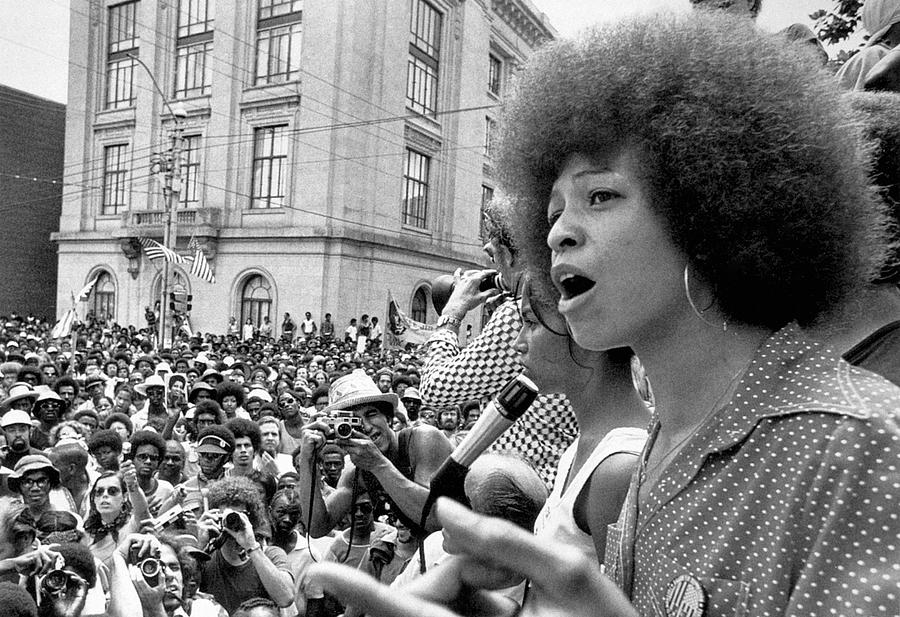
Writer, activist, educator. Born on January 26, 1944, in Birmingham, Alabama. Angela Davis is best known as a radical African American educator and activist for civil rights and other social issues. She knew about racial prejudice from her experiences with discrimination growing up in Alabama. As a teenager, Davis organized interracial study groups, which were broken up by the police. She also knew several of the young African American girls killed in the Birmingham church bombing of 1963.Angela Davis later moved north and went to Brandeis University in Massachusetts where she studied philosophy with Herbert Marcuse. As a graduate student at the University of California, San Diego, in the late 1960s, she joined several groups, including the Black Panthers. But she spent most of her time working with the Che-Lumumba Club, which was all-black branch of the Communist Party.Hired to teach at the University of California, Los Angeles, Angela Davis ran into trouble with the school’s administration because of her association with communism. They fired her, but she fought them in court and got her job back. Davis still ended up leaving when her contract expired in 1970.Outside of academia, Angela Davis had become a strong supporter of three prison inmates of Soledad Prison known as the Soledad brothers (they were not related). These three men—John W. Cluchette, Fleeta Drumgo, and George Lester Jackson—were accused of killing a prison guard after several African American inmates had been killed in a fight by another guard. Some thought these prisoners were being used as scapegoats because of the political work within the prison.
During Jackson’s trial in August 1970, an escape attempt was made and several people in the courtroom were killed. Angela Davis was brought up on several charges, including murder, for her alleged part in the event. There were two main pieces of evidence used at trial: the guns used were registered to her, and she was reportedly in love with Jackson. After spending roughly 18 months in jail, Davis was acquitted in June 1972.
After spending time traveling and lecturing, Angela Davis returned to teaching. Today, she is a professor at the University of California, Santa Cruz, where she teaches courses on the history of consciousness. Davis is the author of several books, includingWomen, Race, and Class (1980) and Are Prisons Obsolete? (2003).
- Billy Eckstine
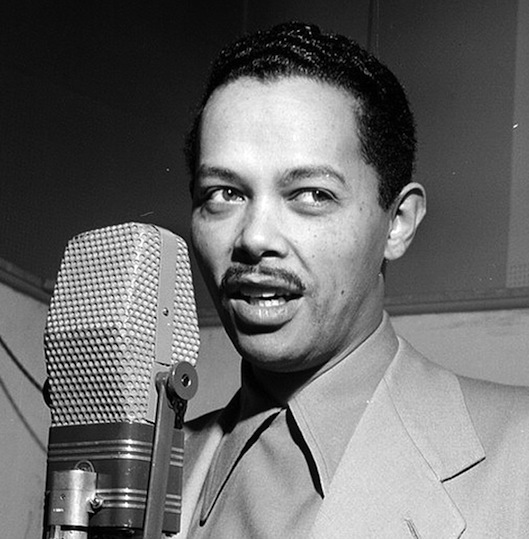
William Clarence Eckstine (July 8, 1914 – March 8, 1993) was an American singer of ballads and a bandleader of the swing era. Eckstine’s smooth baritone and distinctive vibrato broke down barriers throughout the 1940s, first as leader of the original bop big-band, then as the first romantic black male in popular music. Eckstine’s recording of “I Apologize” (MGM Pop Single, 1948) was inducted into the Grammy Hall of Fame Award in 1999.
Eckstine was born in Pittsburgh, Pennsylvania; a State Historical Marker is placed at 5913 Bryant St, Highland Park, Pittsburgh, Pennsylvania, to mark the house where he grew up. Later moving to Washington, D.C., Eckstine began singing at the age of seven and entered many amateur talent shows. He attended Armstrong High School, St. Paul Normal and Industrial School, and Howard University. He left Howard in 1933, after winning first place in an amateur talent contest.
After working his way west to Chicago, Eckstine joined Earl Hines’ Grand Terrace Orchestra in 1939, staying with the band as vocalist and, occasionally, trumpeter, until 1943. By that time, he had begun to make a name for himself through the Hines band’s radio shows with such juke-box hits as “Stormy Monday Blues” and his own “Jelly Jelly.”In 1944, Eckstine formed his own big band and made it a fountainhead for young musicians who would reshape jazz by the end of the decade, including Dizzy Gillespie, Dexter Gordon, Miles Davis, Art Blakey, Charlie Parker, and Fats Navarro. Tadd Dameron and Gil Fuller were among the band’s arrangers, and Sarah Vaughan gave the vocals a contemporary air. The Billy Eckstine Orchestra was the first bop big-band, and its leader reflected bop innovations by stretching his vocal harmonics into his normal ballads. Despite the group’s modernist slant, Eckstine hit the charts often during the mid 1940s, with Top Ten entries including “A Cottage for Sale” and “Prisoner of Love”. On the group’s frequent European and American tours, Eckstine, popularly known as Mr. B, also played trumpet, valve trombone and guitar.Dizzy Gillespie, in reflecting on the band in his 1979 autobiography To Be or Not to Bop, gives this perspective: “There was no band that sounded like Billy Eckstine’s. Our attack was strong, and we were playing bebop, the modern style. No other band like this one existed in the world.”
After a few years of touring with road-hardened be-boppers, Eckstine became a solo performer in 1947, and seamlessly made the transition to string-filled balladry. He recorded more than a dozen hits during the late 1940s, including “My Foolish Heart” and “I Apologize.” He was one of the first artists to sign with the newly-established MGM Records, and had immediate hits with revivals of “Everything I Have Is Yours” (1947), Richard Rodgers’ and Lorenz Hart’s “Blue Moon” (1948), and Juan Tizol’s “Caravan” (1949).
Eckstine had further success in 1950 with Victor Young’s theme song to “My Foolish Heart” and a revival of the 1931 Bing Crosby hit, “I Apologize”. However, unlike Nat “King” Cole (who followed him into the pop charts), Eckstine’s singing, especially his exaggerated vibrato, sounded increasingly mannered and he was unable to sustain his recording success throughout the decade.
While enjoying success in the middle-of-the-road and pop fields, Eckstine occasionally returned to his jazz roots, recording with Vaughan, Count Basie and Quincy Jones for separate LPs, and he regularly topped the Metronome and Down Beat polls in the Top Male Vocalist category: He won Esquire magazine’s New Star Award in 1946; the Down Beat magazine Readers Polls from 1948 to 1952; and the Metronome magazine award as “Top Male Vocalist” from 1949 to 1954.
Eckstine was a style leader and noted sharp dresser. He designed and patented a high roll collar that formed a “B” over a Windsor-knotted tie, which became known as a “Mr. B. Collar”. The collars were worn by many a hipster in the late 1940s and early 1950s. Legend has it that his refined appearance even had an effect on trumpeter Miles Davis. Once, when Eckstine came across a disheveled Davis in the depths of his heroin excess, his remark “Looking sharp, Miles” served as a wake-up call for Davis, who promptly returned to his father’s farm in the winter of 1953 and finally kicked the habit.
In 1984 Billy recorded his final album I Am a Singer. Eckstine died on March 8, 1993, aged 78.
- Mary Fields
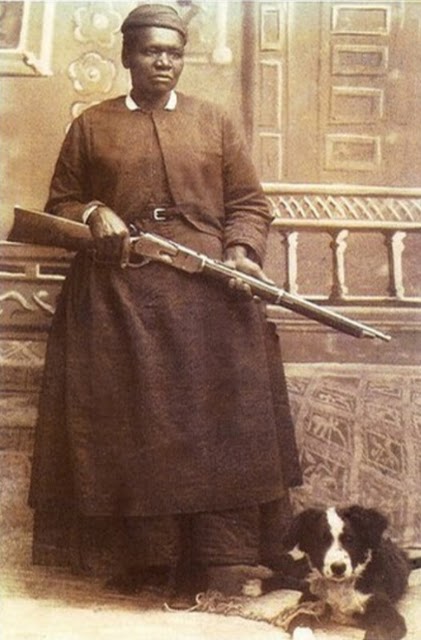 Mary Fields, also known as Stagecoach Mary, was the first African-American woman employed as a mail carrier in the United States, and just the second American woman to work for the United States Postal Service.
Mary Fields, also known as Stagecoach Mary, was the first African-American woman employed as a mail carrier in the United States, and just the second American woman to work for the United States Postal Service.
Born a slave circa 1832 in Hickman County, Tennessee, Fields was freed when American slavery was outlawed in 1865. She then worked in the home of Judge Edmund Dunne. When Dunne’s wife died, Fields took the family’s five children to their aunt, Mother Mary Amadeus, a nun at an Ursuline convent in Toledo. Mother Amadeus was sent to Montana Territory to establish St. Peter’s Mission, a school for Native American girls. Word came back that Amadeus was ill, and Fields hurried to Montana to nurse her. After Amadeus recovered, Fields stayed at St. Peter’s hauling freight, doing laundry, growing vegetables, tending chickens, repairing buildings, and eventually becoming the forewoman.
The Native Americans called Fields “White Crow” because “she acts like a white woman but has black skin.” Local whites didn’t know what to make of her. One schoolgirl wrote an essay saying “she drinks whiskey, and she swears, and she is a republican, which makes her a low, foul creature.” In 1894, after several complaints, the bishop ordered her to leave the convent.
Mother Amadeus helped her open a restaurant in nearby Cascade. Fields would serve food to anyone, whether they could pay or not, and the restaurant went broke in about ten months.
In 1895, although approximately 60 years old, Fields was hired as a mail carrier because she was the fastest applicant to hitch a team of six horses. She drove the route with horses and a mule named Moses. She never missed a day, and her reliability earned her the nickname “Stagecoach.” If the snow was too deep for her horses, Fields delivered the mail on snowshoes, carrying the sacks on her shoulders.
Fields was a respected public figure in Cascade, and on her birthday each year the town closed its schools to celebrate. When Montana passed a law forbidding women to enter saloons, the mayor of Cascade granted her an exception.
Mary Fields died of liver failure in 1914. In 1959, actor and Montana native Gary Cooper wrote an article for Ebony in which he said, “Born a slave somewhere in Tennessee, Mary lived to become one of the freest souls ever to draw a breath, or a .38.”
Of course, this entry from Badass of the Week is where I first heard of Stagecoach Mary – and knew that she’d be filling the “F” slot in this year’s Black History Month list.
Stray Toasters
- Yesterday, I watched some of the live feed of the Raven’s celebratory parade and stadium celebration. I also realized that it was possibly THE last time that I would get to see this:…until I realized that there are possibly two more chances to see it: The retirement of Ray’s jersey/number and when the Ravens receive their Super Bowl rings.
- Last night, I watched a recording of Pioneers of Television: Superheroes. It was a well-done program, consisting of clips from old shows and interviews with some of the stars. I enjoyed hearing the actors talk about the ups and downs of portraying heroes and how it affected them and their careers. You can watch the episode here; I recommend it, and will be watching other episodes of this series.
- British House of Commons Approves Gay Marriage
- Twitter succumbs to “extremely sophisticated” attack
- Pixel-by-pixel map of Zelda’s Hyrule built from LEGO
- Pulp-O-Mizer
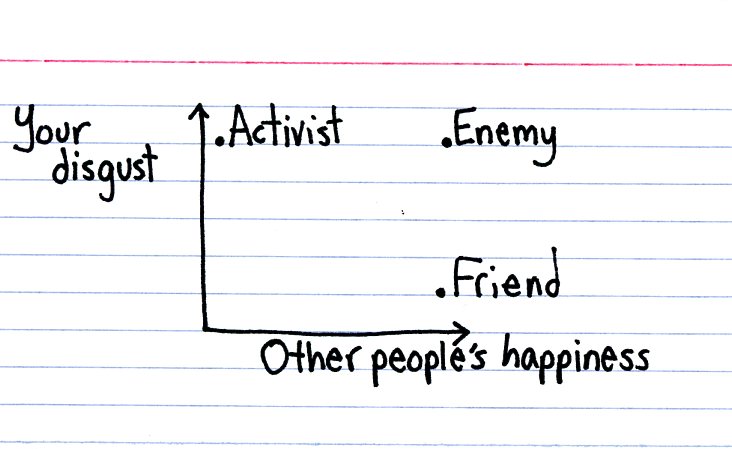
- Avengers/Breakfast Club mash-up
- Postal Service plans to end Saturday mail delivery by August
Back to it.
Namaste.
Groundhog Day: The Day of Shadows
books, comics and animation, computers, event, everyday glory, football, games, geekery, history, kids, LEGO and Rokenbok, movies and TV, music, Whiskey Tango Foxtrot...?! No Comments »Saturday – 02 February 2013
It’s Groundhog Day.
(Just so you know, there won’t be a guest post by Bill Murray or Andie MacDowell. Sorry.)
It’s the weekend. Hallelujah. It hasn’t been a bad week, but with Team DiVa not sleeping well (due to their colds), Sara! and I haven’t been sleeping well. Or, rather, our sleep has been broken and not as restful as it could be.
Chew on This: Food for Thought – Black History Month
Today’s person: Julian Bond
Horace Julian Bond (born January 14, 1940), known as Julian Bond, is an American social activist and leader in the American civil rights movement, politician, professor, and writer. Bond was born in Nashville, Tennessee, to the former Julia Agnes Washington and Horace Mann Bond.
In 1960, Bond was a founding member of the Student Nonviolent Coordinating Committee (SNCC) and served as its communications director from 1961 to 1966. From 1960 to 1963, he led student protests against segregation in public facilities in Georgia. Bond left Morehouse College in 1961 and returned to complete his BA in English in 1971 at age 31. With Morris Dees, Bond helped found the Southern Poverty Law Center (SPLC), a public-interest law firm based in Montgomery, Alabama. He served as its president from 1971 to 1979. Bond continues on the board of directors of the SPLC.
In 1965, Bond was one of eight African Americans elected to the Georgia House of Representatives after passage of civil rights legislation, including the Voting Rights Act of 1965. On January 10, 1966, however, Georgia state representatives voted 184-12 not to seat him because he publicly endorsed SNCC’s policy regarding opposition to U.S. involvement in the Vietnam War. They disliked Bond’s stated sympathy for persons who were “unwilling to respond to a military draft”. A federal District Court panel ruled 2-1 that the Georgia House had not violated any of Bond’s federal constitutional rights. In 1966, the United States Supreme Court ruled 9-0 in the case of Bond v. Floyd (385 U.S. 116) that the Georgia House of Representatives had denied Bond his freedom of speech and was required to seat him. From 1967 to 1975, Bond was elected for four terms as a Democratic member in the Georgia House. There he organized the Georgia Legislative Black Caucus.
In January 1967, Bond was among eleven House members who refused to vote when the legislature elected segregationist Lester Maddox of Atlanta as governor of Georgia over the Republican Howard Callaway, who had led in the 1966 general election by some three thousand votes. The choice fell on state lawmakers under the Georgia Constitution of 1824 because neither major party candidate had polled a majority in the general election. Former Governor Ellis Arnall polled more than fifty thousand votes as a write-in cadidate, a factor which led to the impasse. Bond would not support either Maddox or Callaway though he was ordered to vote by lame duck Lieutenant Governor Peter Zack Geer.
He went on to be elected for six terms in the Georgia Senate in which he served from 1975 to 1987.
During the 1968 presidential election, Bond led an alternate delegation from Georgia to the Democratic National Convention in Chicago. There, unexpectedly and contrary to his intention, he became the first African American to be proposed as a major-party candidate for Vice President of the United States. While expressing gratitude for the honor, the 28-year-old Bond quickly declined, citing the constitutional requirement that one must be at least 35 years of age to serve in that office.
Bond resigned from the Georgia Senate in 1987 to run for the United States House of Representatives from Georgia’s 5th congressional district. He lost the Democratic nomination in a runoff to rival civil rights leader John Lewis in a bitter contest, in which Bond was accused of using cocaine and other drugs. As the 5th district had a huge Democratic majority, the nomination delivered the seat to Lewis, who still serves as congressman.
In the 1980s and 1990s, Bond taught at several universities in major cities of the North and South, including American, Drexel, Harvard, and the University of Virginia.
In 1998, Bond was selected as chairman of the NAACP. In November 2008, he announced that he would not seek another term as chairman. Bond agreed to stay on in the position through 2009 as the organization celebrated its 100th anniversary. Roslyn M. Brock was chosen as Bond’s successor on February 20, 2010.
He continues to write and lecture about the history of the civil rights movement and the condition of African Americans and the poor. He is President Emeritus of the Southern Poverty Law Center.
From 1980 to 1997 he hosted America’s Black Forum. He remains a commentator for the Forum, for radio’s Byline, and for NBC’s The Today Show. He authored thenationally syndicated newspaper column Viewpoint. He narrated the critically acclaimed PBS series Eyes on the Prize in 1987 and 1990.
Bond has been an outspoken supporter of the rights of gays and lesbians. He has publicly stated his support for same-sex marriage. Most notably he boycotted the funeral services for Coretta Scott King on the grounds that the King children had chosen an anti-gay megachurch. This was in contradiction to their mother’s longstanding support for the rights of gay and lesbian people. In a 2005 speech in Richmond, VA, Bond stated:
- African Americans … were the only Americans who were enslaved for two centuries, but we were far from the only Americans suffering discrimination then and now. … Sexual disposition parallels race. I was born this way. I have no choice. I wouldn’t change it if I could. Sexuality is unchangeable.
In a 2007 speech on the Martin Luther King Day Celebration at Clayton State University in Morrow, GA, Bond said, “If you don’t like gay marriage, don’t get gay married.” His positions have pitted elements of the NAACP against religious groups in the Black Civil Rights movement who oppose gay marriage mostly within the Southern Christian Leadership Conference (SCLC) who was blamed partly for the success of the recent gay marriage ban amendment in California.
Today, Bond is a Distinguished Professor in Residence at American University in Washington, D.C. He also is a faculty member in the history department at the University of Virginia at Charlottesville, where he teaches history of the Civil Rights Movement.
Stray Toasters
- I like football. That’s kind of well-known. I just saw a commercial on CBS about the Super Bowl: The game starts at 6:30 PM EST… but their game day coverage starts at 11:00 AM. What. The. Hell?!
- Top 10 Good Tech Habits Everyone Should Have
- Temple of the Winds: Done
On to Soul of the Fire - How LEGO Fans See Each Other
- I just heard Emeli Sandè for the first time on The Late Show with David Letterman. I might have to track down some of her other stuff.
- For Sara!…
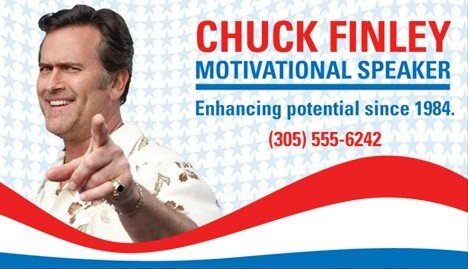
- I started playing Star Trek Online tonight. Because, you know, I need another time sink.
- Superman in Bondage: The Kinkiest Kryptonian Covers Ever Published
- As much as I love my kids, look forward to the day when diapers are a thing of the past, and enjoy my iPad, this is something that I don’t foresee taking up space in our home.
- Sesame Street mashed up with the Beastie Boys’ “Sure Shot”
Namaste.
Daddy-DiVa Saturday!
basketball, business and economy, dining and cuisine, everyday glory, food for thought, games, history, kids, movies and TV, people, politics and law, space, style and fashion, the world, Whiskey Tango Foxtrot...?! No Comments »Saturday – 26 January 2013
It’s the weekend. Selah.
It’s been a good and somewhat busy week. Sara! has been attending a conference this week, so it’s mostly been Team DiVa and me at home at night. We all survived. That’s a good thing. Sara!’s conference ends today, but for most of the day, it’s just me and the little ladies.
Sidenote: Some people have made the mistaken assumption that I refer to the girls as “Team DiVa” because they are – or will possibly be – little divas. Despite one of their grandmother’s being affectionately referred to as “The Diva” (Capital “T,” Capital “D”) by family and friends, we don’t plan on the girls being spoiled little brats. (Spoiled, maybe. Little, only if they don’t get their mother’s height. Brats, no. Period. Full stop.)
We call refer to the girls as Team DiVa because of their names. Hence the two capital letters in “DiVa,” rather than just one. We noted the “nickname” when we chose the name – and, no, we didn’t choose the names to create the nickname. I don’t think that we were really planning on using it until someone asked us if we were aware of that “DiVa” could be made from the girls’ names. From that point on, it just kind of… stuck.
Besides, it makes for an easy way to refer to them as well as a handy hashtag for Twitter.
Stray Toasters
- Lumberjills of The Women’s Timber Corps
- After Years of Estrangement, Eight Siblings Become a Family
I heard this story on my Friday morning commute; I would love to hear the entire 40-minute story. - THQ Dissolved and Sold Off in Pieces
- Dr. Ellen Ochoa, the First Latina in Space, Is Now The Johnson Space Center’s Second Female Director, Too
- It’s official: J.J. Abrams is directing the next Star Wars movie.
- Panetta: ‘Everyone Entitled to a Chance’ at Combat
- Play With Your Food
- The Balancing Act of Being Female; or Why We Have So Many Clothes
- At $17.5 Million a Year, LeBron James Is Underpaid
Huh, there are a lot of ‘Toasters about women and women-focused topics here. That’s okay, I want Team DiVa to as many good examples of good female role models as I can find.
Namaste.
‘Clix, Opera and the AFC
business and economy, dining and cuisine, event, everyday glory, family and friends, football, games, history, house and home, movies and TV, opera, style and fashion, travel, Whiskey Tango Foxtrot...?! No Comments »Monday – 20 January 2013
Today is Martin Luther King, Jr. Day.
This past weekend was a good weekend.
Saturday, I judged a HeroClix tournament. I set up an event for my friend, Keith, who is in town on vacation. Keith was the judge for ‘Clix tournaments when I first started playing, so I was happy to do it. There was a good turn out for the game – we wound up with 12 players.
After the game, Sara! and I headed out for the evening.
It was the opening night for Utah Opera’s staging of Florencia En El Amazonas:
This is a fairly “new” opera, first staged in 1996. The set design also included a projected background, which changed over the course of the opera, making it appear that the boat (the main piece of scenery) was traveling on the Amazon River.
The Utah Opera costume shop also did an outstanding job of outfitting the cast. There was also a big of… whimsy in some of the ladies’ dress designs. I was particularly taken with the costuming of one of the male leads, to the point of wanting a couple of the pieces for my own wardrobe.
The music for the opera was well-suited to the story. It wasn’t oppressive or heavy; on the contrary, it was lively and, quite frankly, beautiful.
Something else that I enjoyed was that the libretto was amazingly well done. The stories in many operas are fanciful and often rely on some “magical thing” to happen to wrap things up by the coda. That wasn’t the case in this opera. Far from it, in fact. It was easily one of the – if not THE – most realistic bit of storytelling I’ve seen in an opera. The characters were… human, not just characters and far from being caricatures. Their motivations and reactions were incredibly well-grounded.
I haven’t determined exactly where it falls, but this is definitely on my favorite opera list. I highly recommend seeing it to any and every one.
Sunday, or at least the early part of it, was mostly spent around the house. The afternoon, however, was dedicated to football. Brad and Keith came over to watch the AFC Championship Game…
Instant Replay: Football
| Baltimore Ravens at New England Patriots |
|
| 28 – 13 | |
 |
 |
The Ravens headed to Foxboro, Massachusetts to take on the New England Patriots in a rematch of last year’s AFC Championship:
There was a lot of expectation that tonight’s game would turn out like last year’s… …but the Ravens and their fans knew that they didn’t want Ray Lewis’ “Last Ride” to end in New England. The game was close in the first half, with New England drawing first blood with a field goal. Baltimore answered with a touchdown in the second quarter. New England put up another FG in the 2nd and the teams went into halftime with the Pats up 13-7. The second half belonged to the Ravens. They put up another 21 points while keeping the Pats out of the end zone and out of field goal range. On the Pats’ last drive, Brady was moving his team downfield well. It looked like they were about to put 6 points on the board until Cary Williams picked off a pass. Joe Flacco was able to take a knee and send the Ravens to their first Super Bowl in 12 years. Congratulations to the Ravens on a fantastic and well-played game. On to New Orleans, where the Ravens and Head Coach John Harbaugh will face the San Francisco 49ers, coached by former Ravens QB Jim Harbaugh… John’s brother. |
|
Stray Toasters
- Guess who’s going to learn how to sew. This guy. Details to follow.
- The life and death of the American arcade
- 13 Travel Uses for Common Household Items
- Ghostbusters – Still fun. A lot of fun.
- Garage converted into modernist apartment
- The Helpers – Horror Movie Edible Installation
- A Mysterious Patch of Light Shows Up in the North Dakota Dark
Yeah, my team is going to the Super Bowl. Boom!
Namaste.
And then there was Friday.
art, comics and animation, computers, event, everyday glory, games, geekery, kids, movies and TV, the world, travel, Whiskey Tango Foxtrot...?! No Comments »Friday – 11 January 2013
Today has been a good day. Even with all the snow.
The morning commute was about a half-hour long, give or take. The drive was made a little better with the addition of two fifty-pound bags of salt to the trunk. (I have a rear-wheel drive car that apparently puts out A LOT of torque at low speed.) But, on the whole, it was uneventful.
The evening commute was slower than expected, but it wasn’t nearly as bad as last night’s two-hour journey. I made it home in about 45 minutes.
Stray Toasters
- A few days ago, I changed the screen saver on the computer in Team DiVa’s room. Previously, it was just random abstract lights; now it’s a series of space pictures. And the girls have gone completely mad over it. Seriously. They used to always/only want to play AlphaBaby on their computer. Now, they just want to see the screen saver. They’ve even learned the sign for “stars,” well.. mostly. They have it about 90% down. But you still know what it is that they want. And I couldn’t be happier to let them have it.
- Harbin International Ice and Snow Festival

- No, it’s not a prequel: ABC President Confirms S.H.I.E.L.D. Takes Place After The Avengers
#CoulsonLives #AllThePheels - The 6 Things You Need to Know About DC Universe Online
- A little food for thought: I Stopped Telling Women to Smile (and You Should, Too)
- U.S. Currency as the Justice League
- Someone call Samuel L. Jackson (or maybe William Shatner or John Lithgow): Snake on a Plane: Qantas Passenger Spots Python Holding on to Wing During Flight
And that’s a wrap.
Namaste.

